About Ebykr
Ebykr celebrates classic and vintage lightweight bicycles through provoking imagery and opinion. Let's roll together!
About Ebykr
Ebykr celebrates classic and vintage lightweight bicycles through provoking imagery and opinion. Let's roll together!
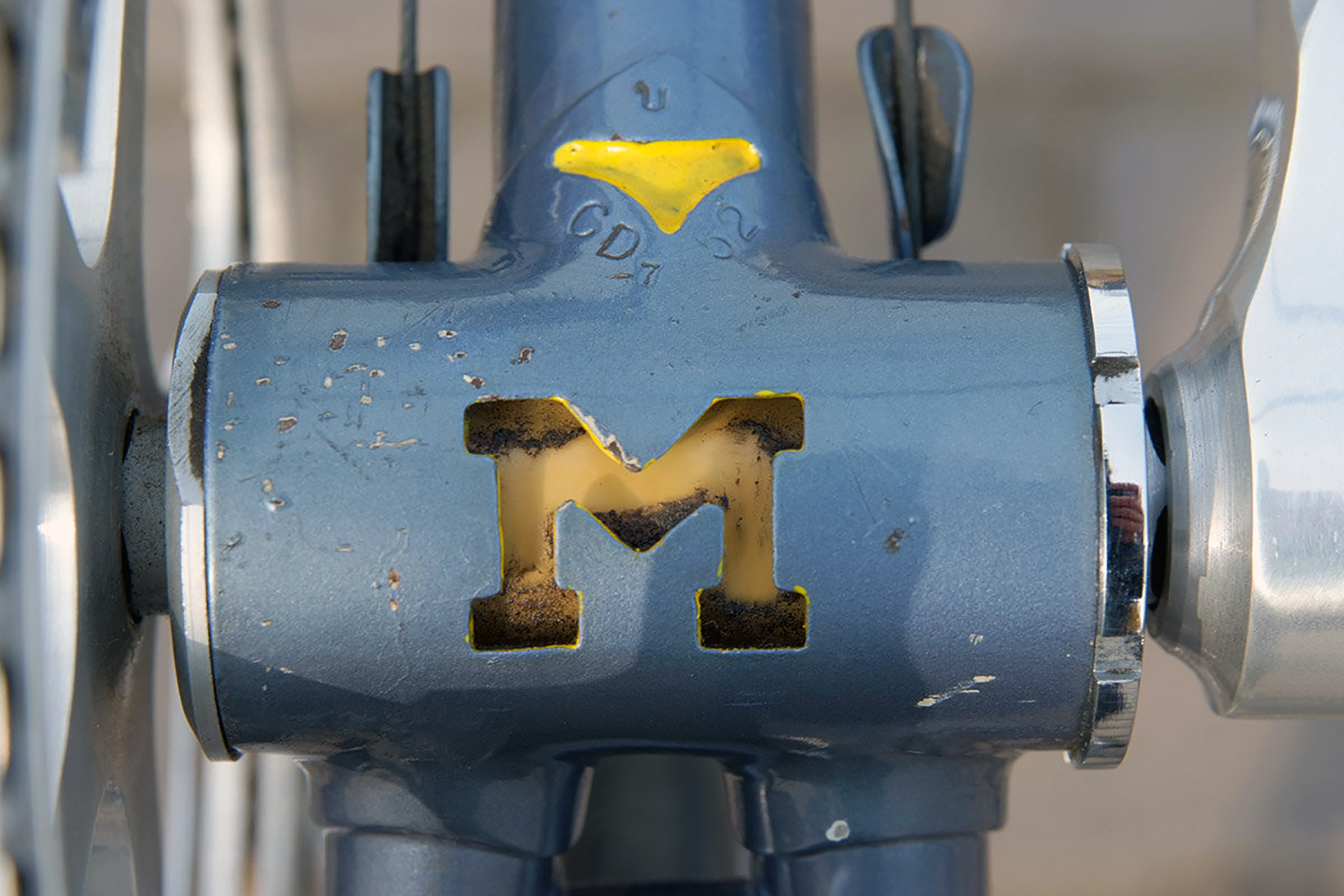

Since the dawn of competitive bicycle racing, Italian frame builders have produced some of the world’s most painstakingly crafted and sought after machines. Of all the Italian brands desired by bicycle aficionados, vintage Masis turn up high or even highest on the list.
One of history’s premiere bicycle artisans, Faliero Masi started his trade after racing professionally in the Giro d’Italia and Milan San Remo races during the 1930s. His competitive experience helped Masi intuit what other racers wanted in their ideal bike while fueling his own desire for perfection among other builders.
Masi spent a few years sharpening his skills at Gloria just before the Second World War. He then worked on various professional cycling teams as a mechanic through the 1940s while frequently building riders’ bikes to individual (and often scrupulously detailed) specs. By early 1950, Cicli Masi was located below the Vigorelli velodrome in Milan, Italy and producing frames for some of the most legendary bicycle racers in history.
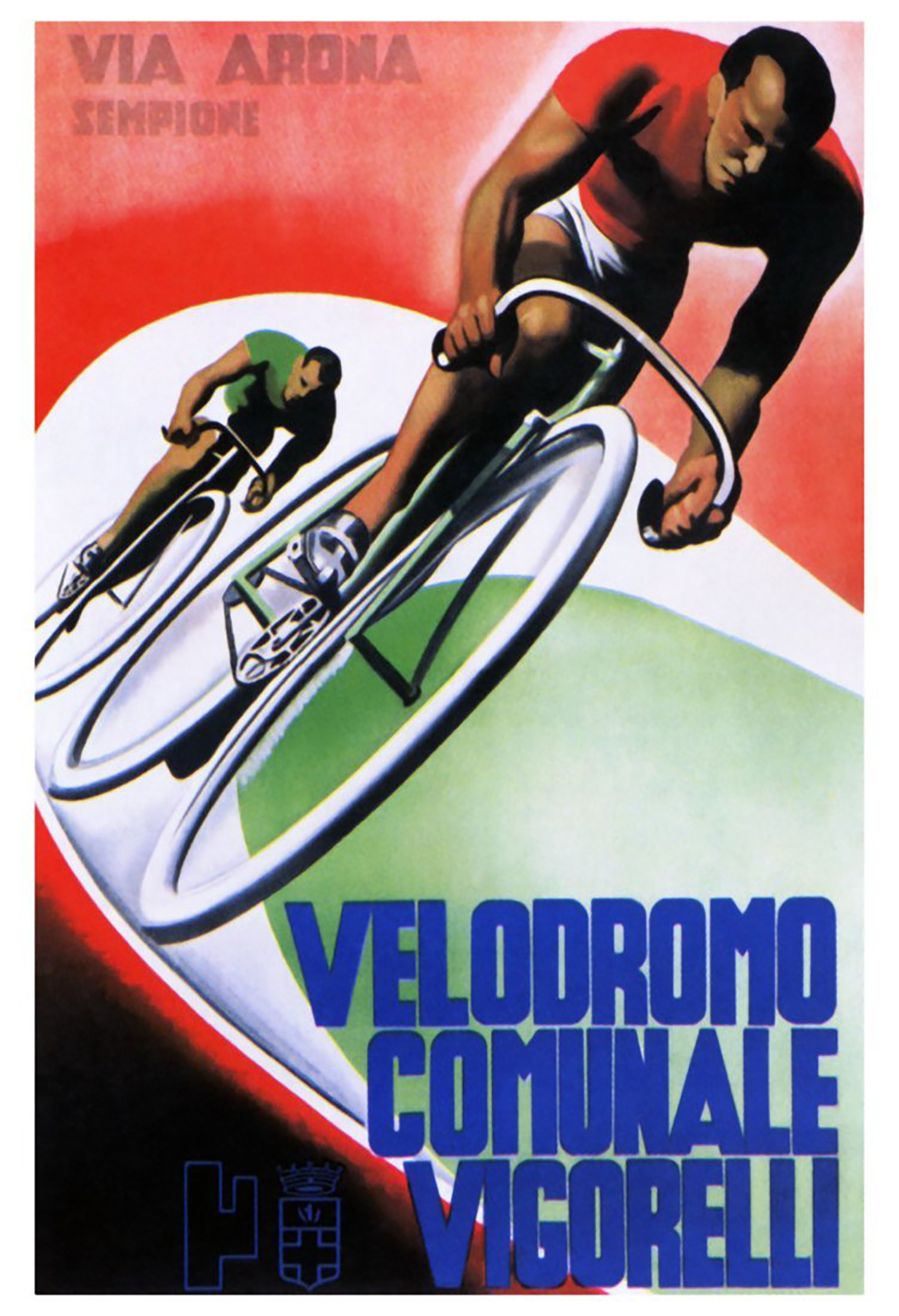
Masi, who was commonly referred to as “The Tailor,” built custom bikes for cycling titans such as Fausto Coppi, Jacques Anquetil and “The Cannibal” himself, Eddy Merckx. Although Masis were ridden by these legends, contractual obligations kept some from putting Masi transfers on their frames.
For example, Fausto Coppi was contracted with Bianchi, yet the frame he rode was actually a Masi. Eddy Merckx’s World Championship Faema bike was also born from the hands of Masi. Tom Simpson and the former world hour record holder Ferdinand Bracke both rode Masis which were labeled Peugeots. These superstars of cycling trekked to the Vigorelli in search of The Tailor, who crafted the “mystique of Masi” one relationship — and often one purpose — at a time.
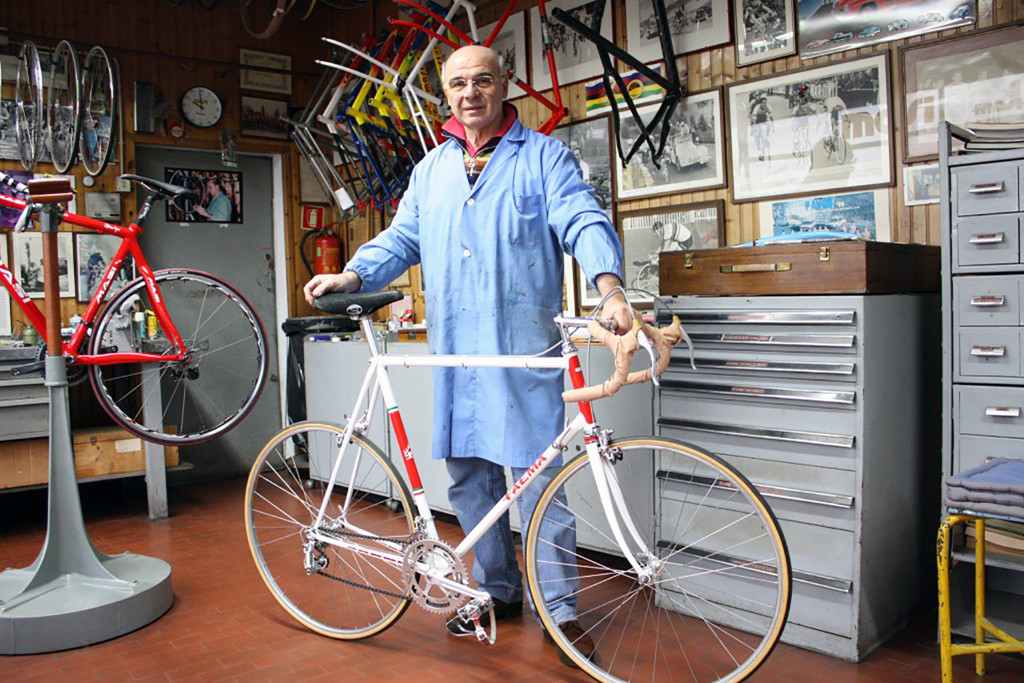
Early Masi models were named “Speciale Corsa” and SDBicycleGarage has a pristine and extremely rare example of a pista model from 1946. Following the Speciale Corsa, all Masis from the 1950s and 1960s were named “Special.” Frames of this era were constructed with either Reynolds 531 tubing or Columbus double butted steel with French and Swiss lugs.
Until the early 1960s, all Masis were hand made by Faliero himself. Masi frames of that era are the most collectible. Frame design and tightly controlled geometries were details Masi paid particular attention to. He built frames based on the anticipated road conditions a rider would likely encounter in a race.
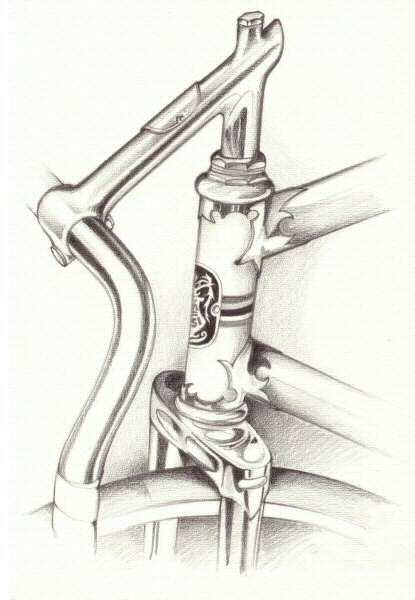
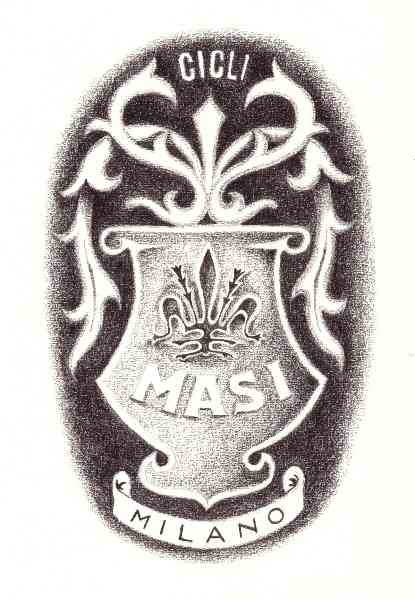
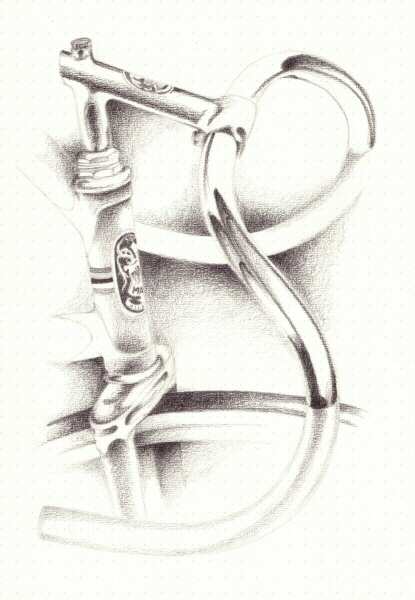
When Masi built a frame for someone riding on the cobbled roads of Europe he designed it with longer fork rake angles and wheelbase for added stability and tracking. Accordingly, Masi framesets made for the U.S. market were not necessarily the same as those produced for the likes of Merckx or other European racers. They instead featured build characteristics tuned for the often better paved and less demanding roads of the U.S. countryside.
Masi also constructed frames based on individual cyclists’ needs, not the industry standardized geometries so prevalent then and today. Masi’s experience and thorough understanding of professional bike racing were significant reasons why each bike that emerged from Cicli Masi donned the coveted World Championship stripes.
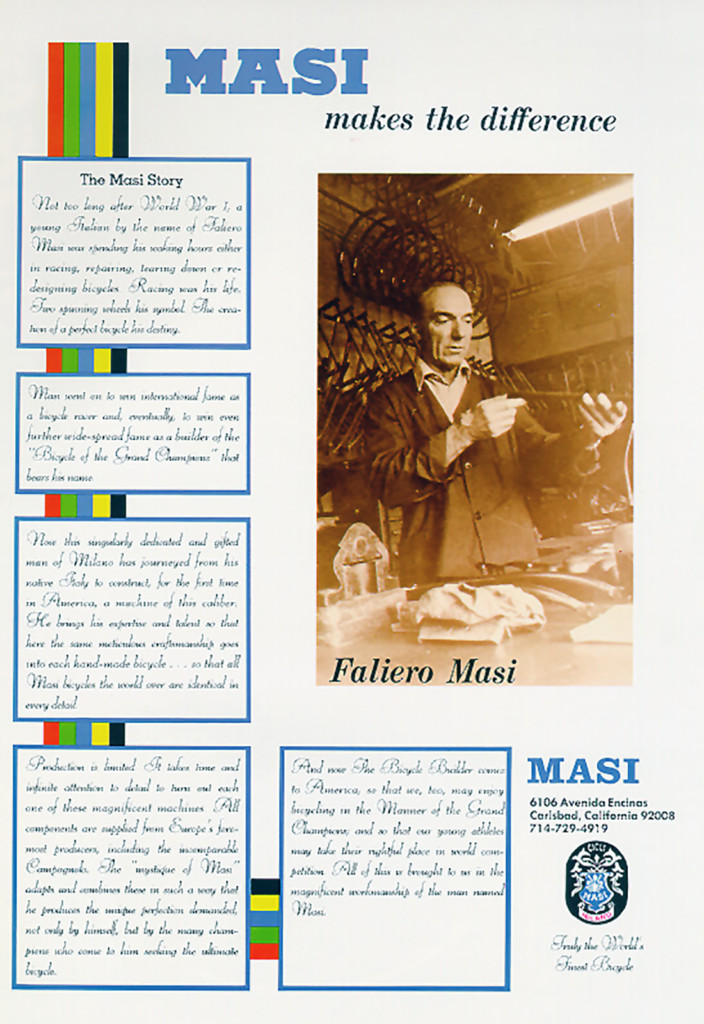
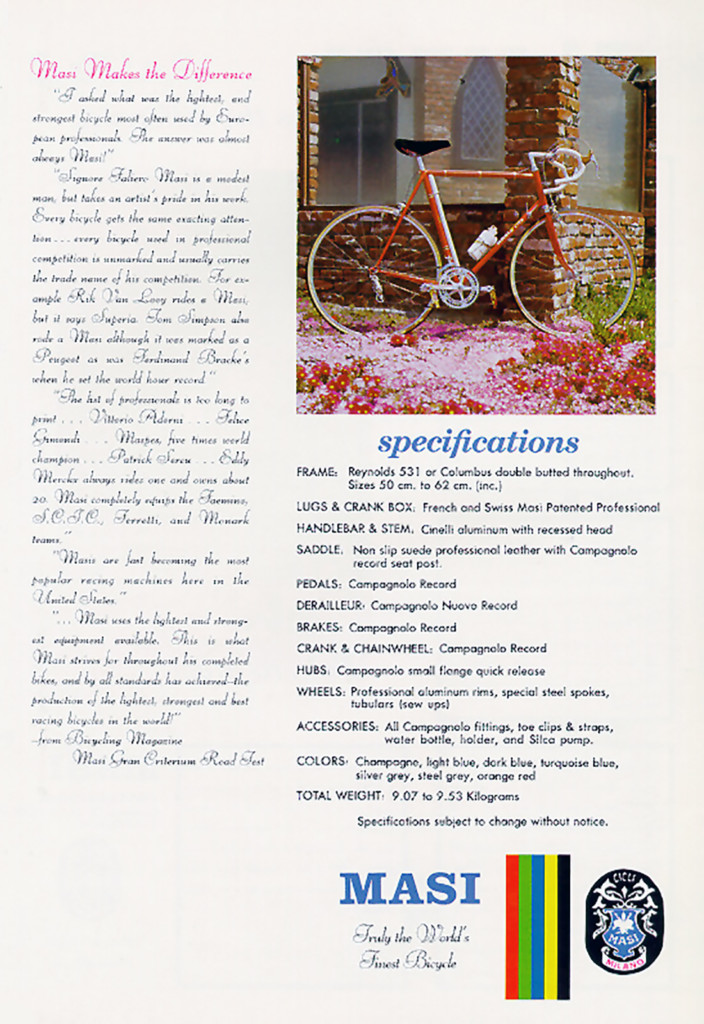
His early customers were among the most demanding athletes in the world and they repeatedly won prestigious races aboard bikes born below the Vigorelli velodrome.
In 1972, Masi expanded his enterprise to the United States to take fuller advantage of the blossoming interest in American road cycling. Faliero’s confidante, Roberto, and his Verona-based sub-contractor and master frame builder, the legendary Mario Confente, also came along to help grow the business.
Masi decided on moving to balmy Carlsbad, California near the Pacific Ocean. He sold the Cicli Masi name and trademark to a group of American investors. In a previous VeloNews interview, Alberto Masi remarked that his father Faliero underestimated the market potential for racing bicycles in America.
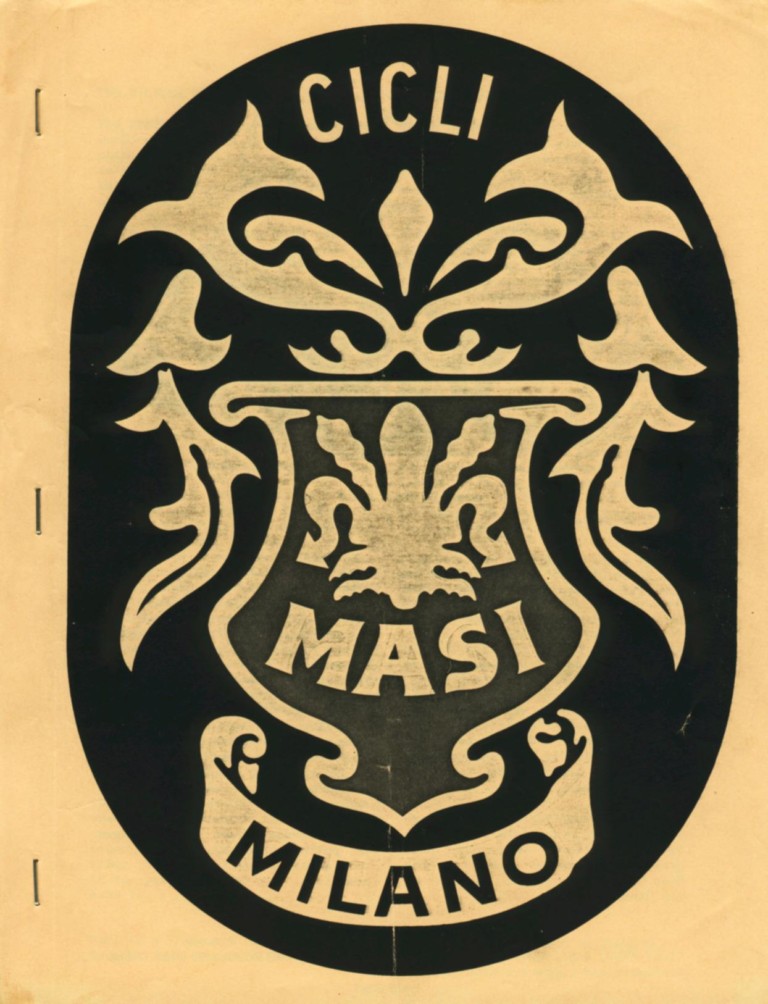
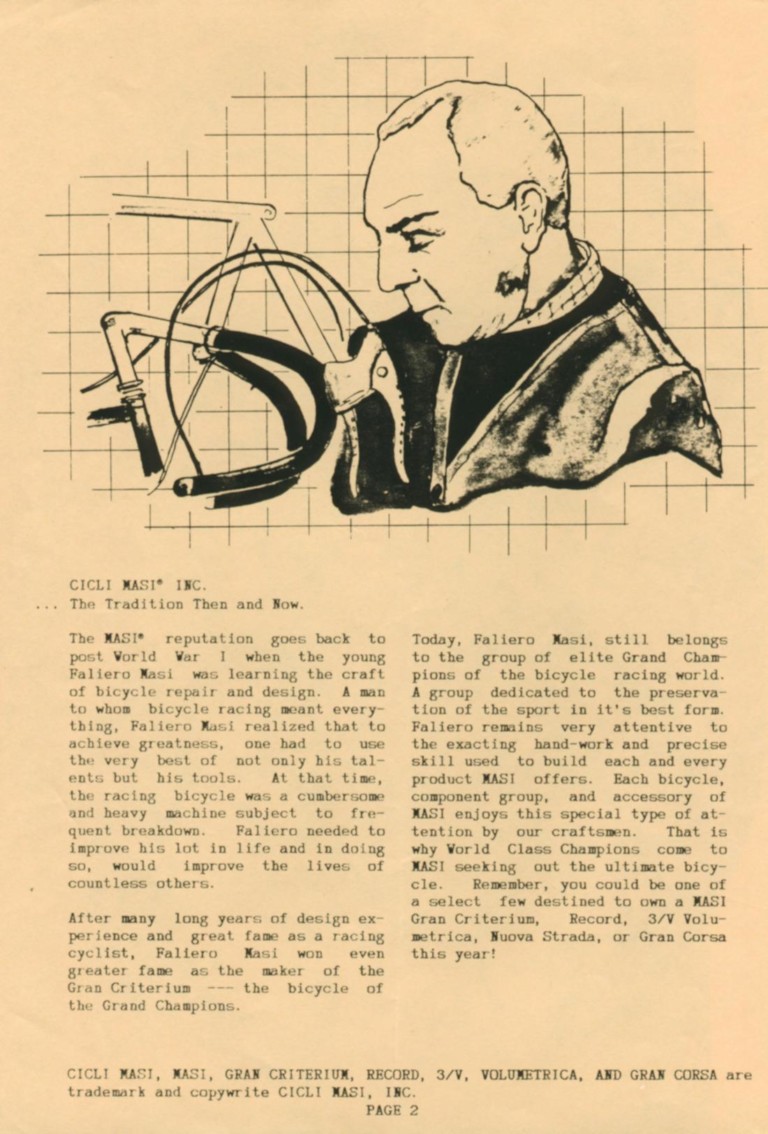
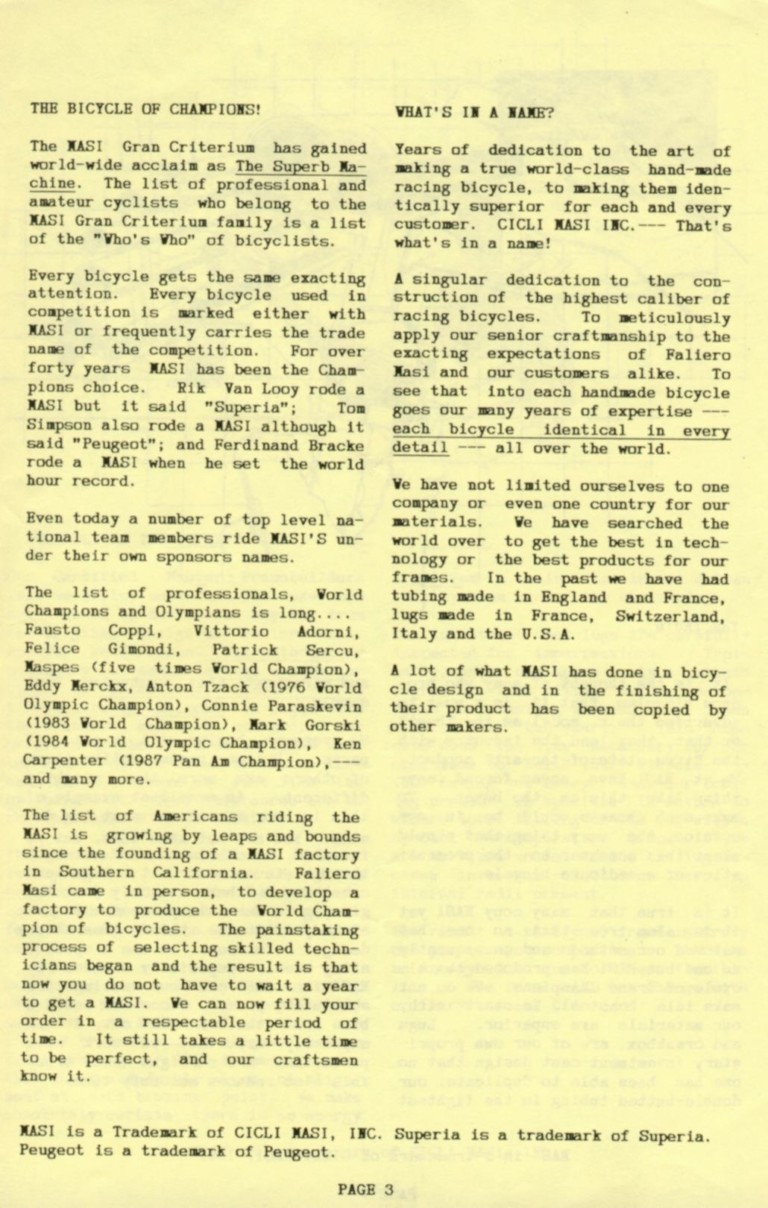
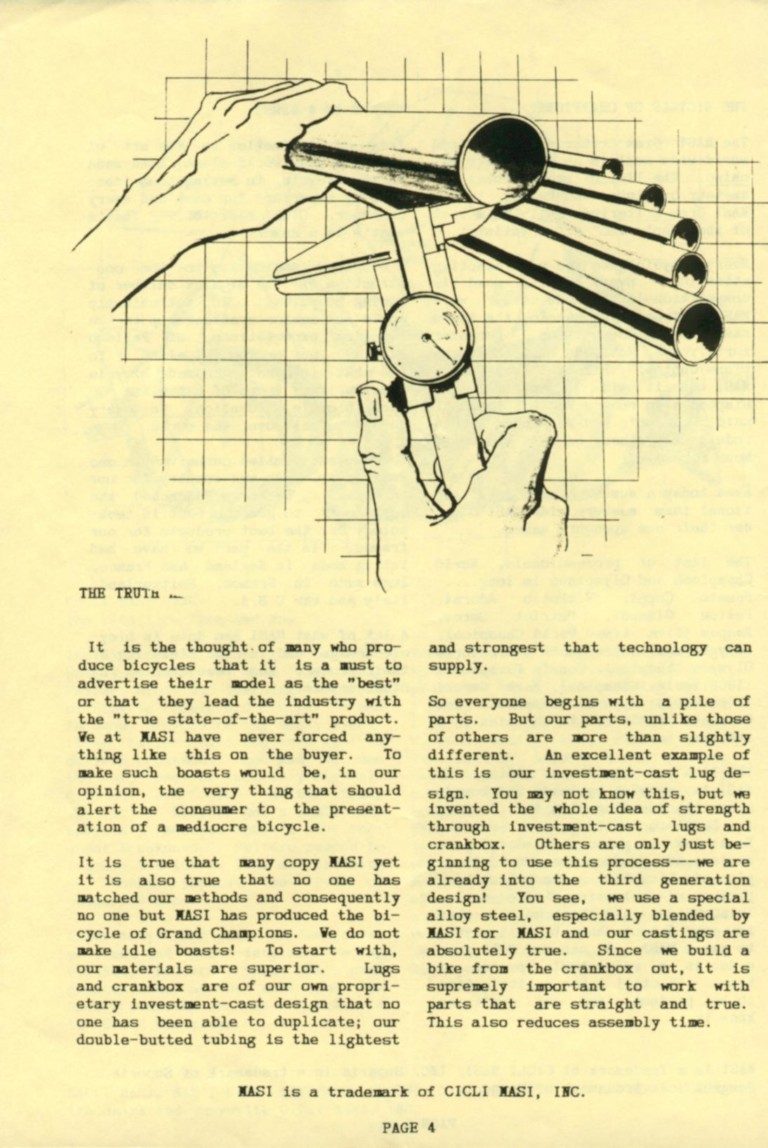
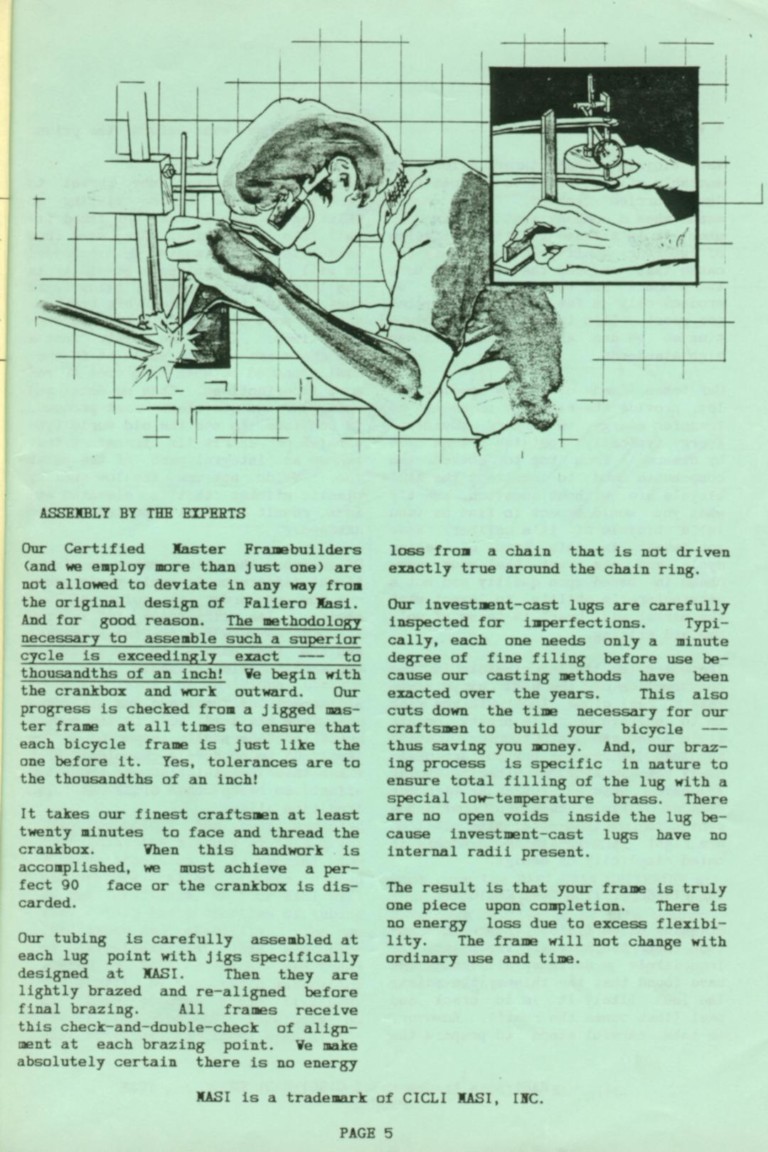
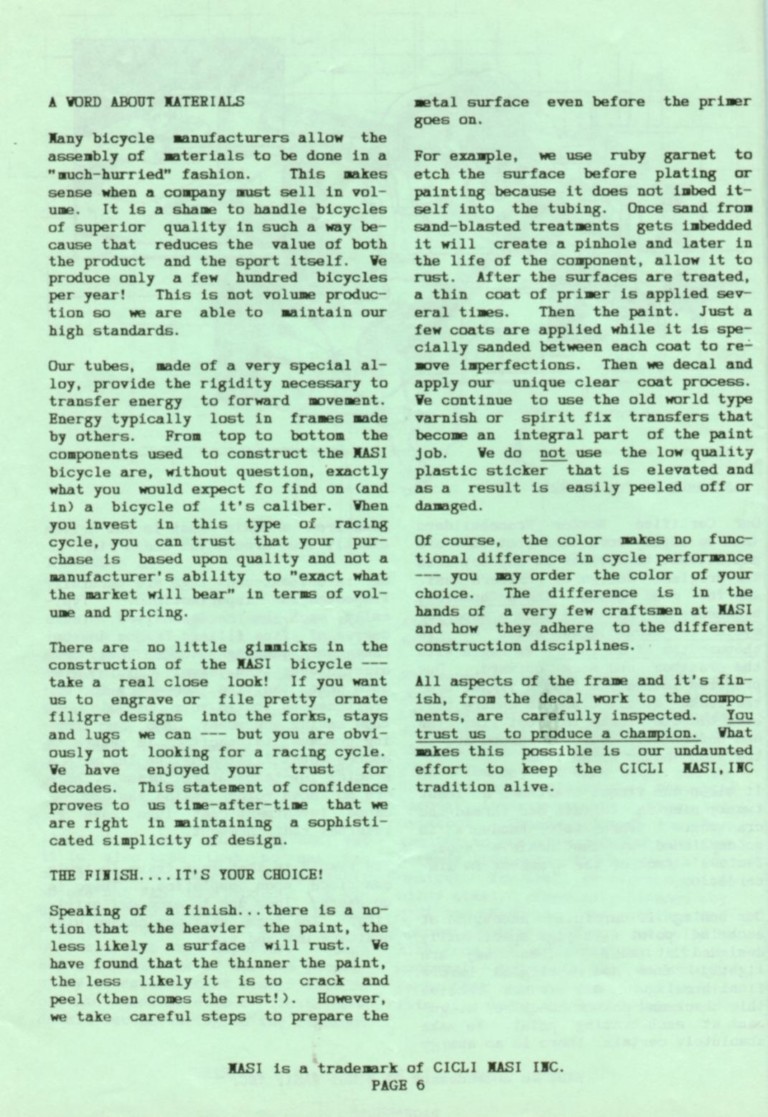
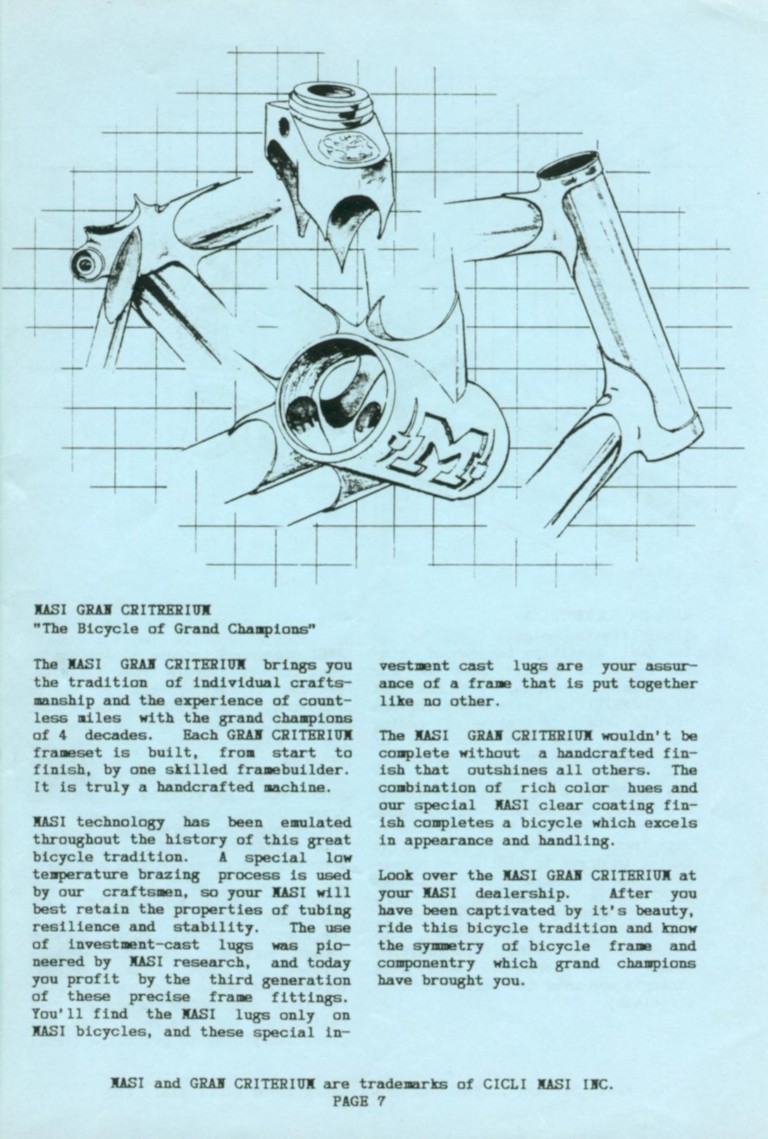
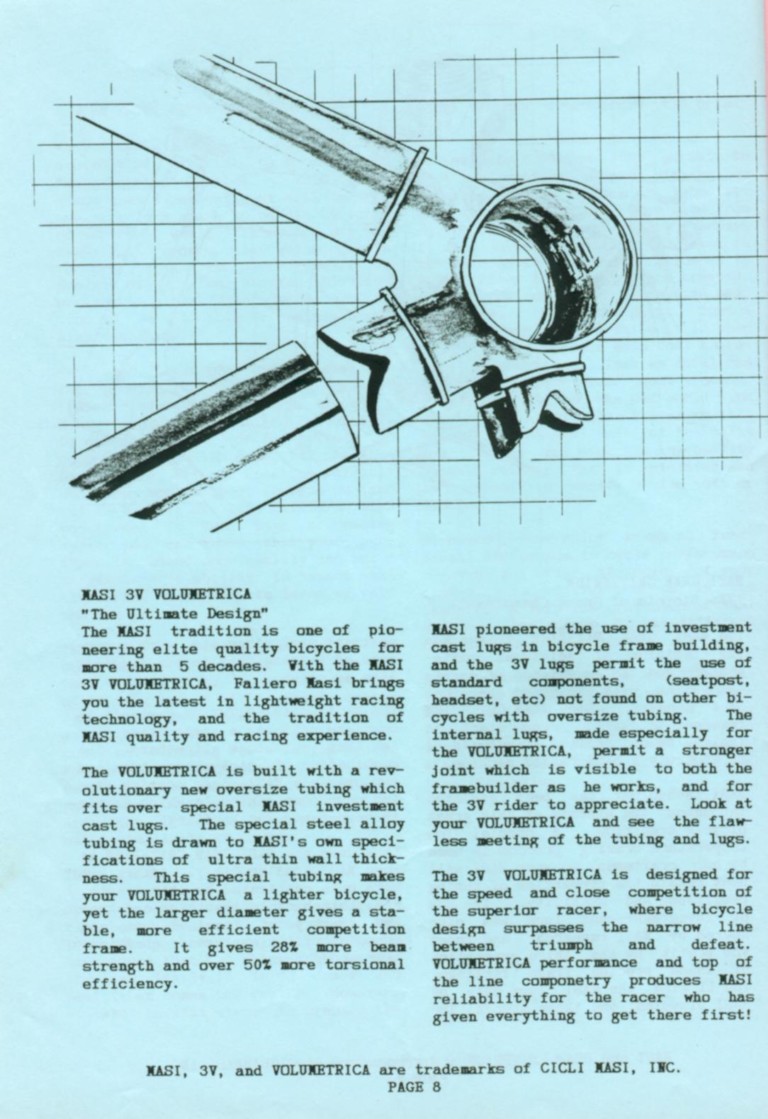
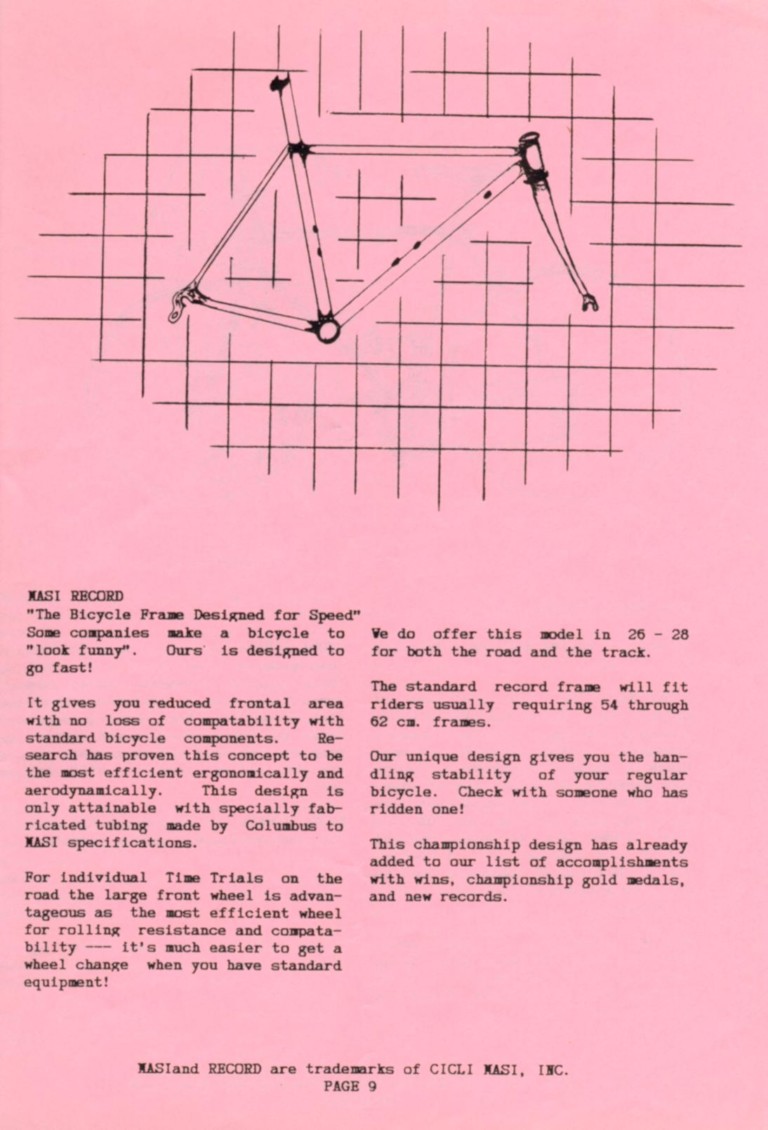
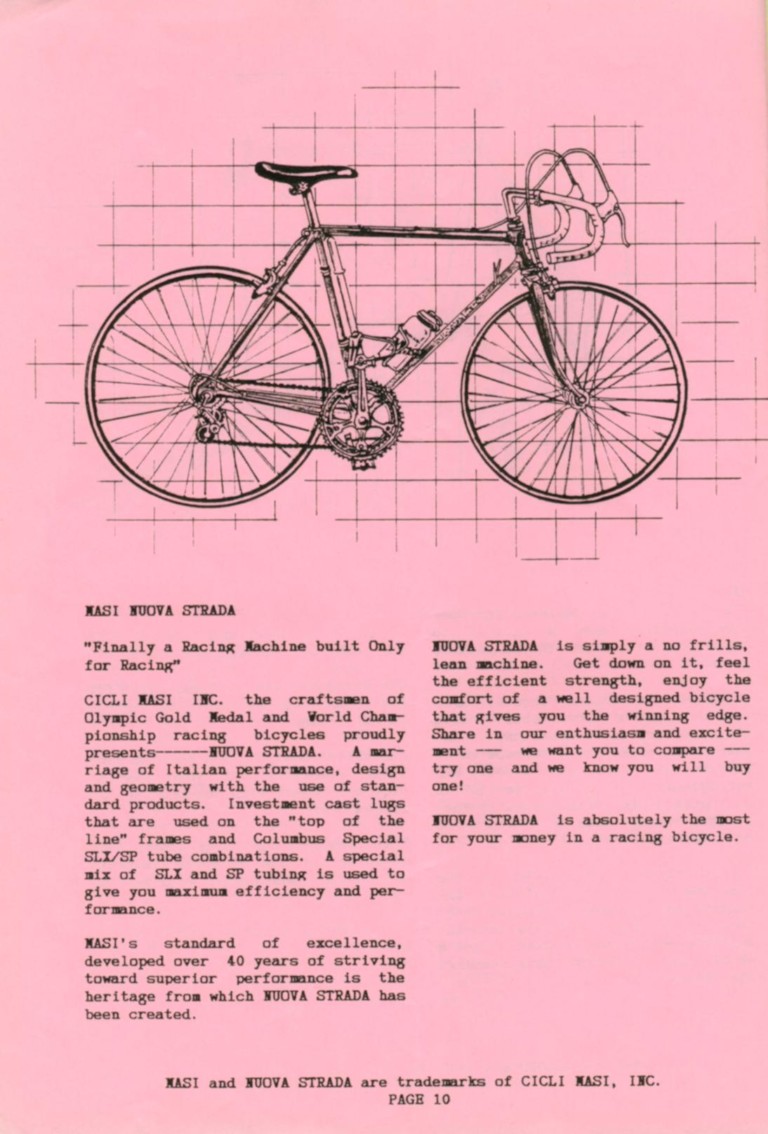
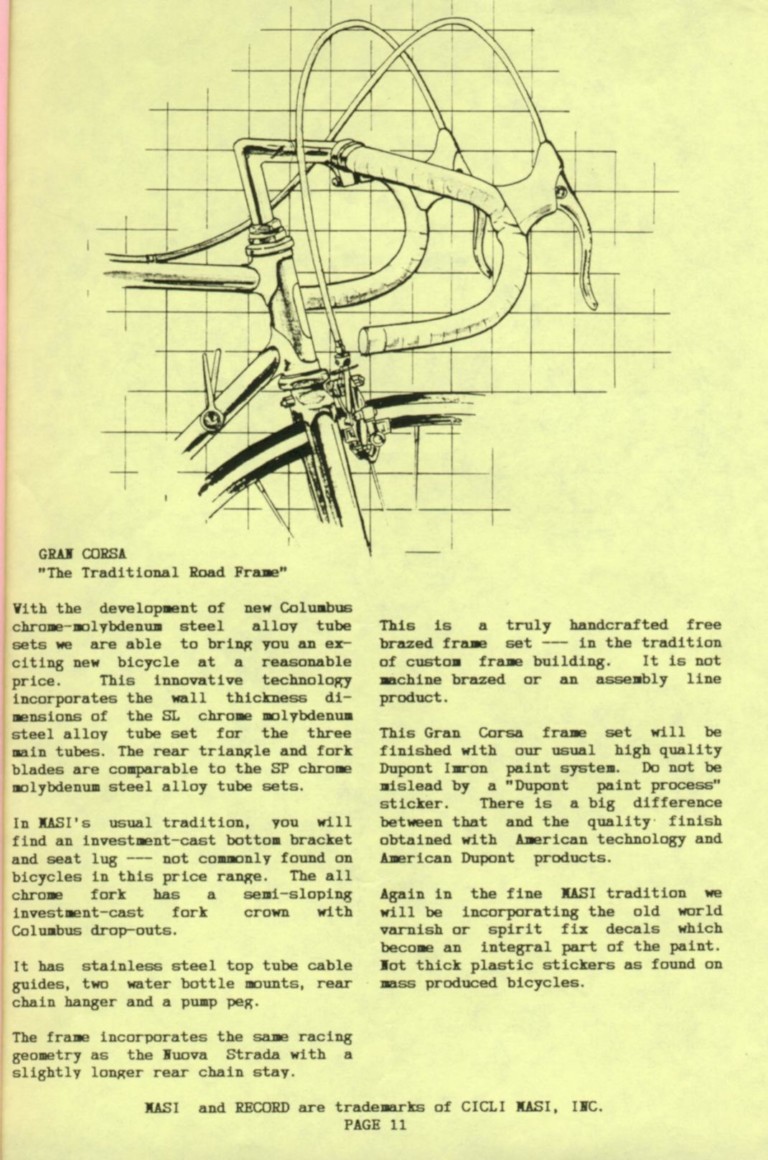
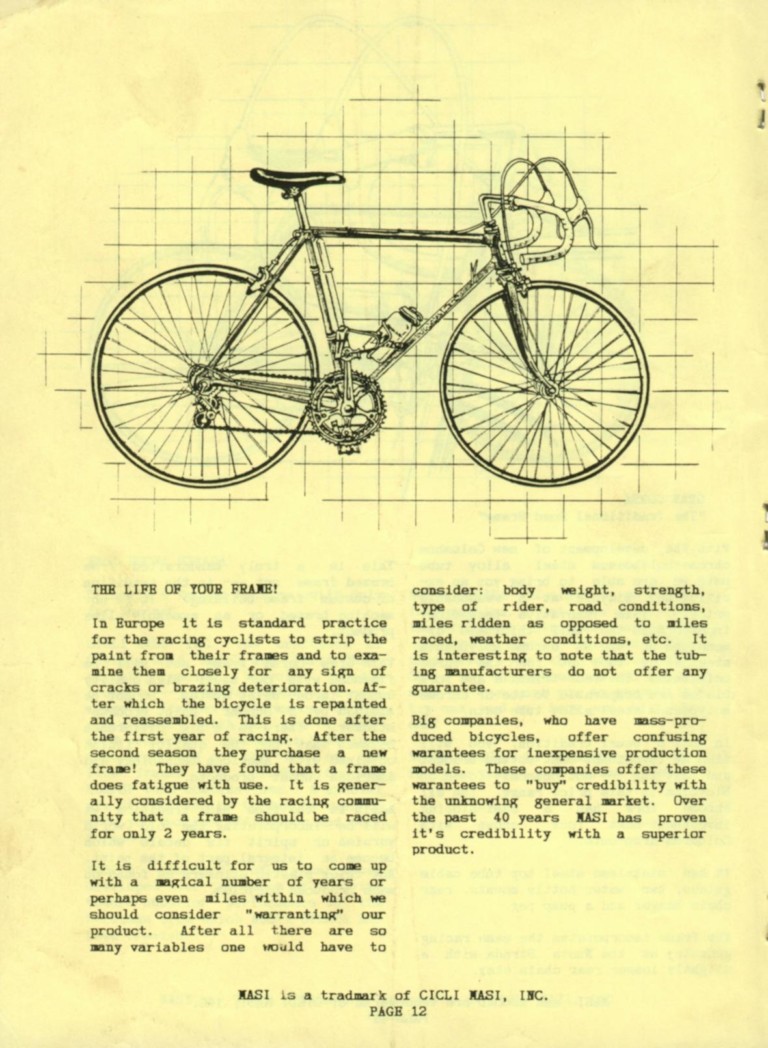
For Masi collectors, or “Masiphiles,” the 1970s California bikes are regarded as some of the finest in company history. They had what no other builder offered the domestic market at the time: an undeniable Italian flair with a twist of custom American craftsmanship. They personified what made the great bicycles from Italy and America great — all rolled into a single package for the first time.
Master American builders like Brian Baylis, Jim Cunningham, Albert Eisentraut, Mike Howard and David Tesch were the hands behind many of the Masis built in the 1970s. Because of these various master craftsmen, California Masis had subtle differences in brazing technique, lug and dropout filing, and fork crown usage.
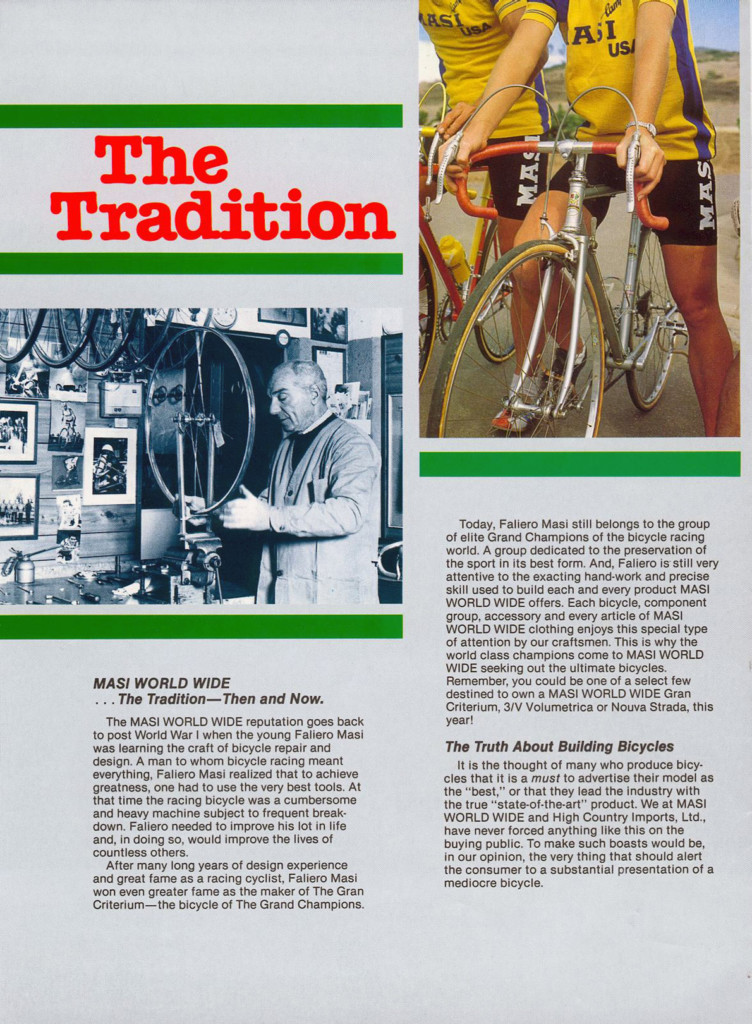
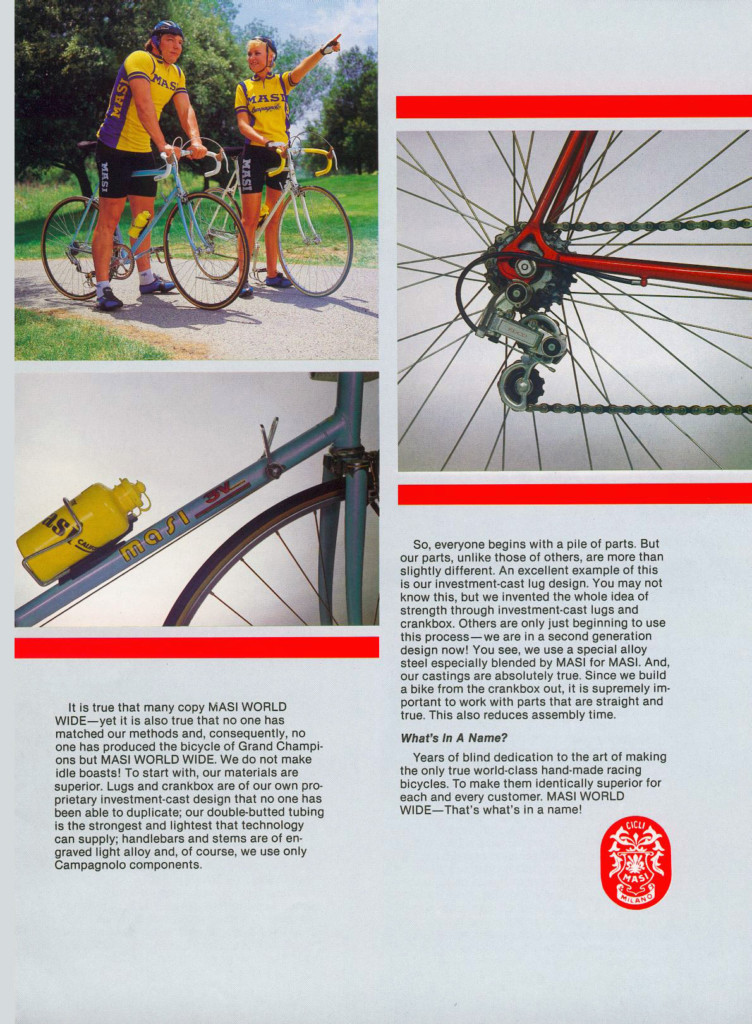
Alberto Masi also built Gran Criterium frames in Milan during the mid to late 1970s but the California models were regarded by many as higher quality. Masi California frames of this period are described by modern collectors as “extraordinary” and “spectacular,” made in the “spirit of the Italian master but with the crispness of an American custom.”
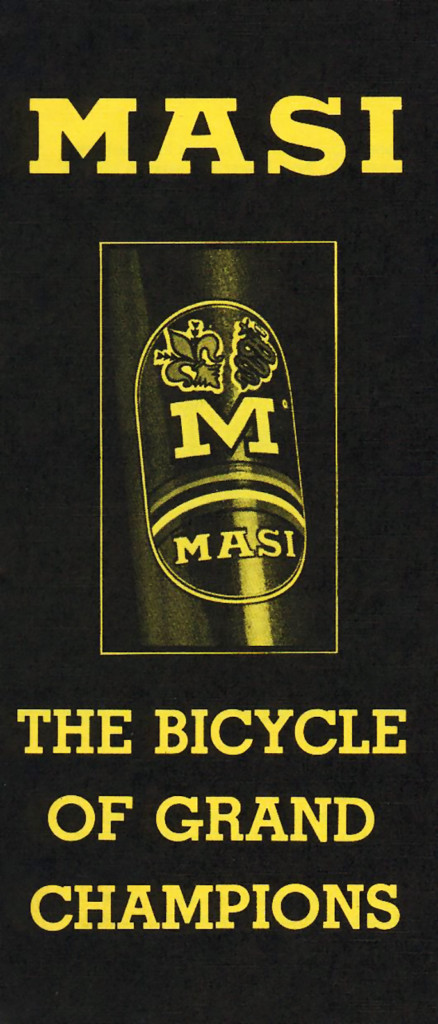
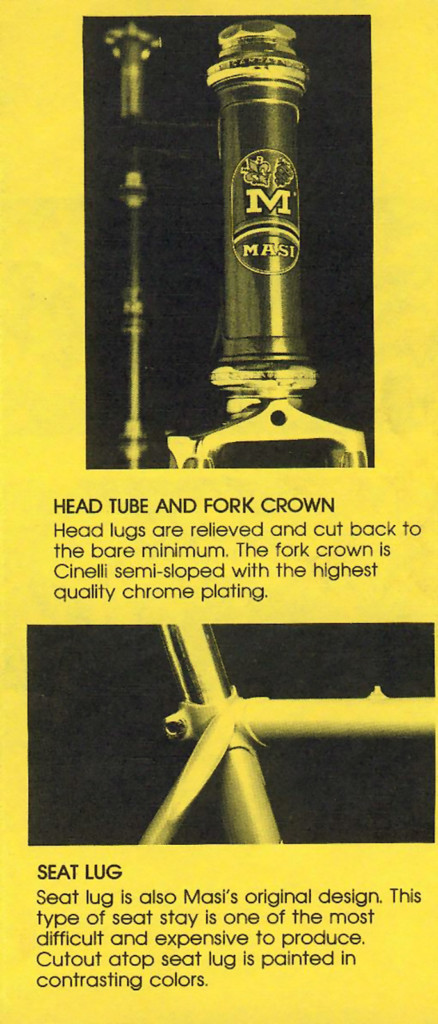
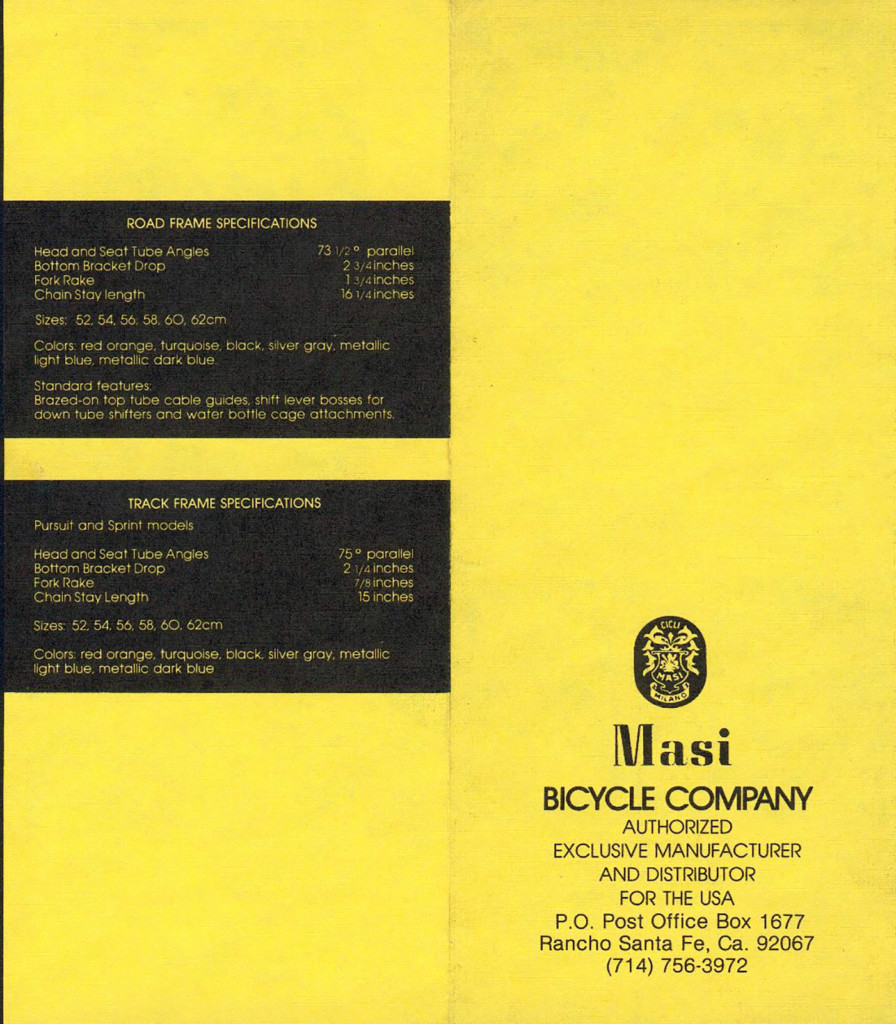
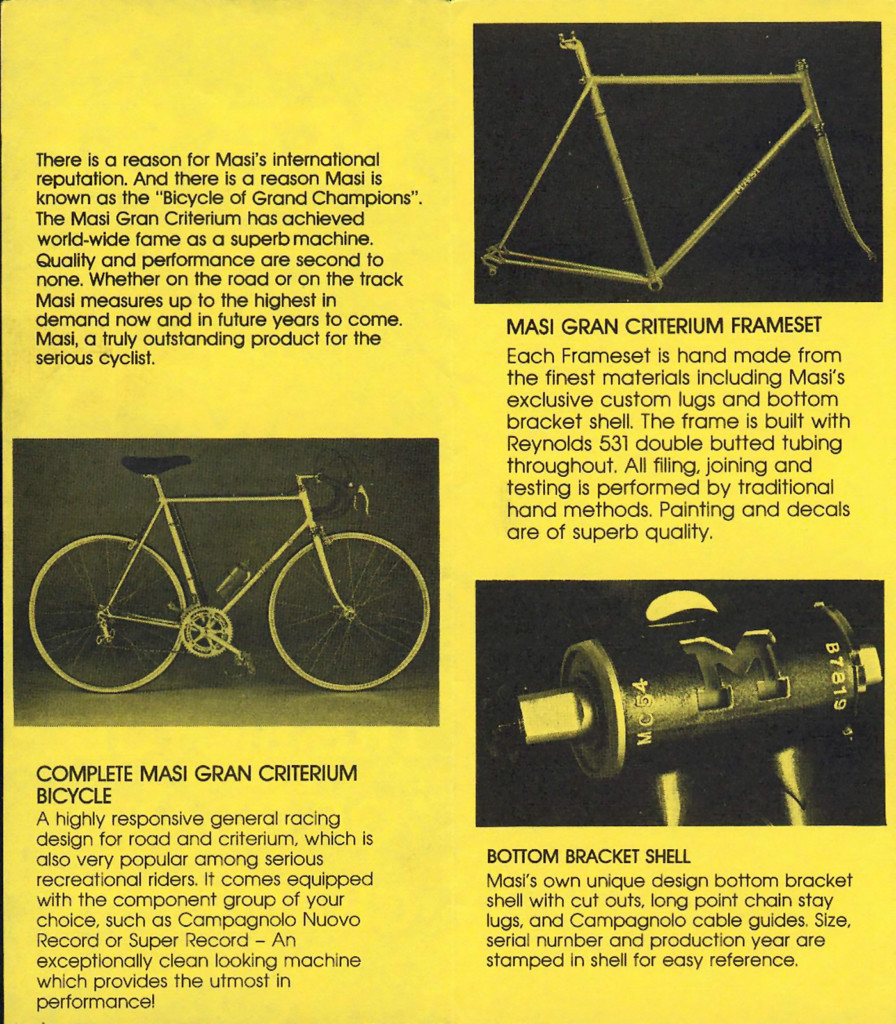
All of the Olympic medalists and most all of the World Track Champions who won their respective titles aboard Masi frames did so on Masi California frames. California Masis were labeled on the bottom bracket with a “MC” designation followed by the frame size and serial number. Italian built frames had a “M” designation followed by the frame size, with the serial number on the fork steerer.
Bob Hovey’s Masi tribute site and Greg Fletcher’s Masi Lore site host a wealth of information on identifying and dating California Masis. Some of the information there was provided by Brian Baylis, longtime Masi employee in the 1970s and former proprietor of Baylis Handmade Cycles.
Of all the visible personalities who rode Masis in the 1970s, Dave Stoller was perhaps the most recognizable in the United States. His Ferrari red 1978 Masi Gran Criterium — a model originally introduced in 1970 — was unmistakable in the Oscar winning movie Breaking Away. The images of Dave cruising through Morgan-Monroe Forest near Bloomington, Indiana, and racing against the infamous Italian Cinzano team converted thousands of young Americans into cycling disciples.
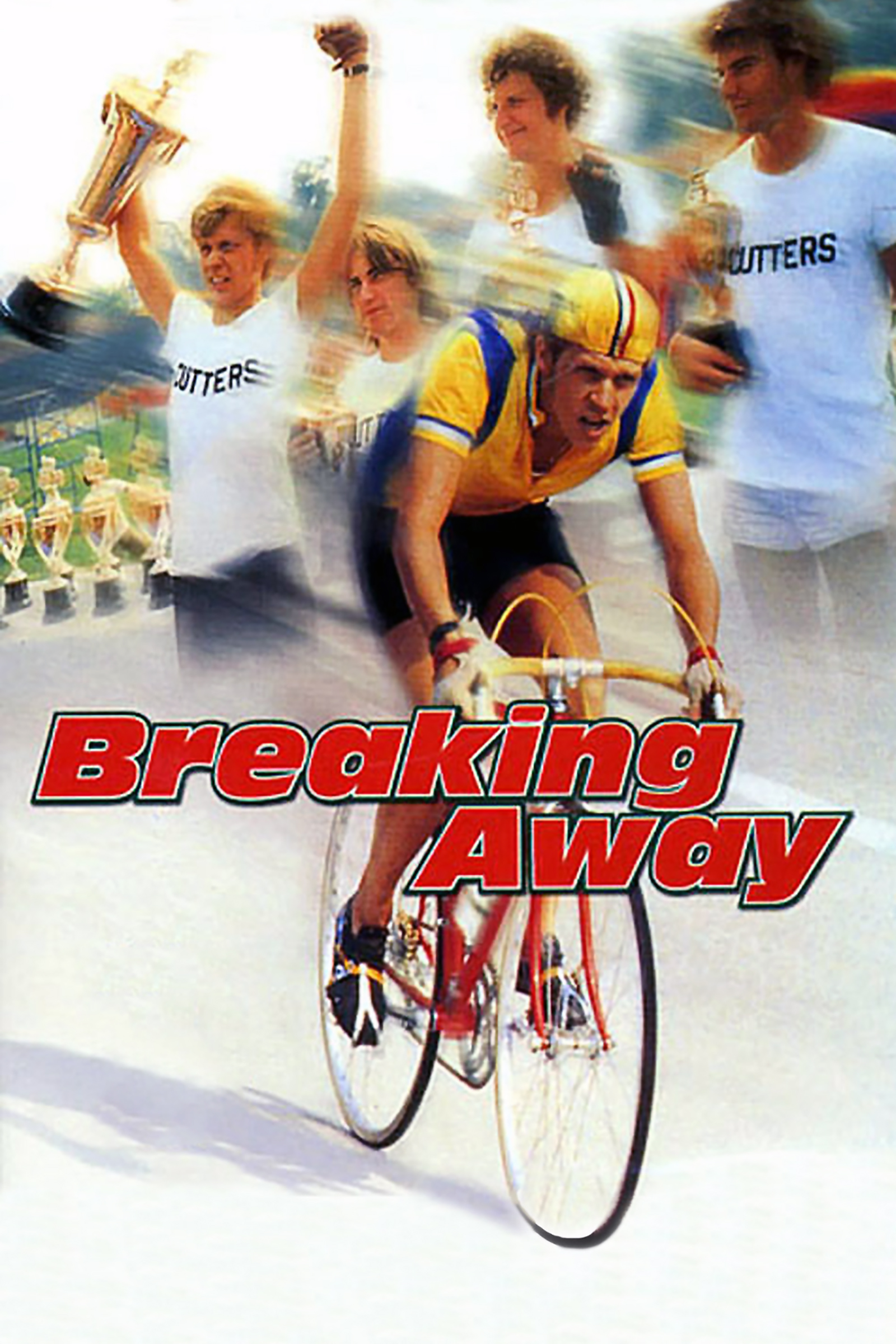
The greatest number of Gran Criteriums were built at the Carlsbad facility in the 1970s, with Breaking Away helping propel the model to become Masi’s most popular ever a few years later.
According to Indiana University… the Little 500 bicycle race began in 1951 as a fundraiser for scholarship money for working students. The race was created by the late Howard S. “Howdy” Wilcox, who patterned it after the Indianapolis 500, which his father had won in 1919. He was inspired by a bicycle race he saw involving students racing around a dormitory, with several women leaning out of windows and cheering them on.
Breaking Away Trivia on IMDB
Like James Bond and his clever Aston Martin, The Bandit and his tire-scorching Trans-Am, and Marlon Brando and his rebel Thunderbird, Dave Stoller’s Gran Criterium was the envy of all then-modern day heroes. It was so incredible the bike enabled its Cutter rider to achieve 60mph drafting behind a Cinzano semi — while in its small chainring!
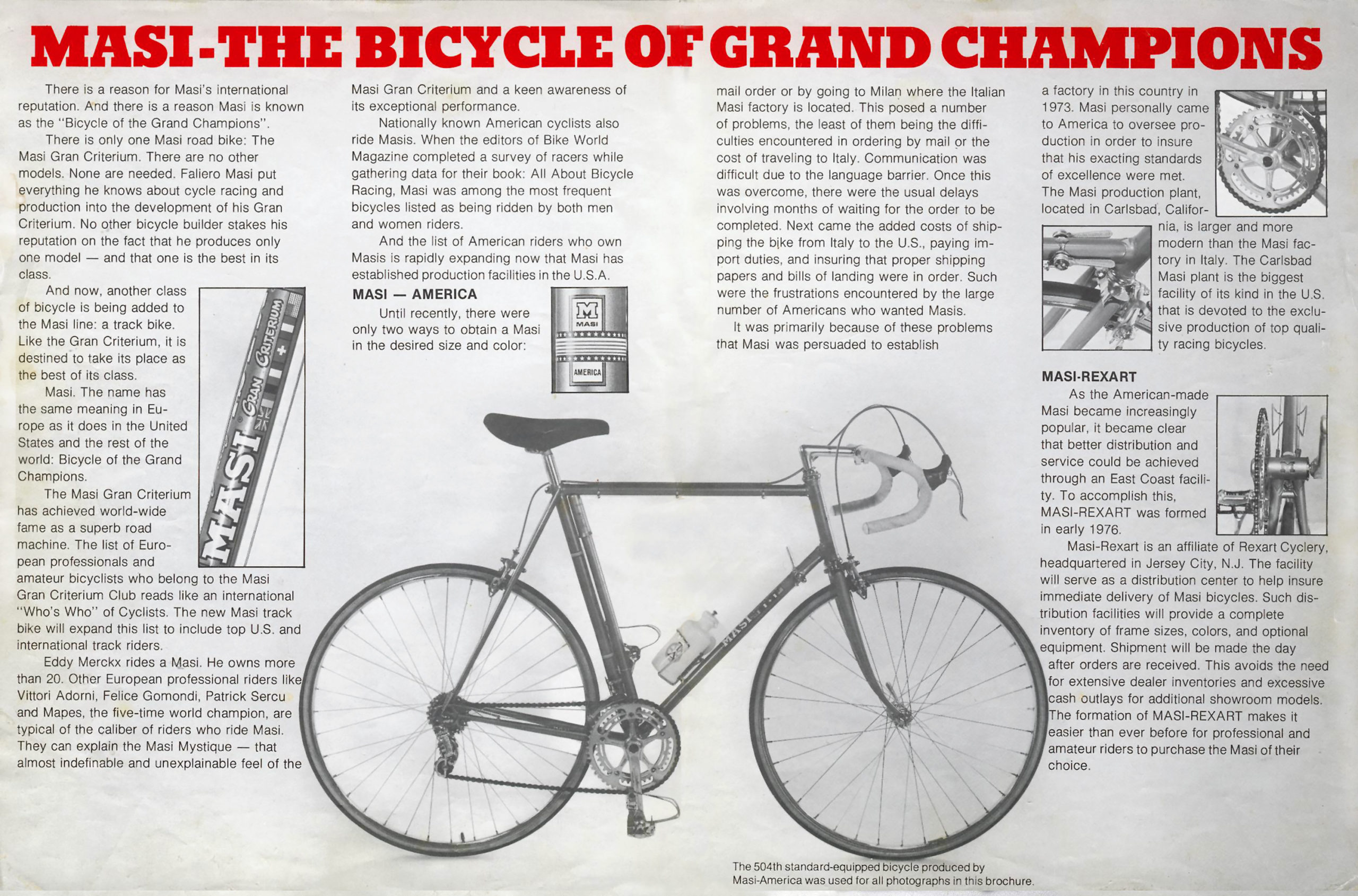
Bianchi couldn’t do that. Neither could De Rosa. Was it the magic of movie making, or was it simply the legend of a Masi? Either way, a nudge from Hollywood helped turn the mystique of Masi into the most desirable racing machine the cycling industry had ever produced.
While Masi was being introduced to the growing U.S. cycling masses, Faliero returned to Italy upon becoming disenchanted with the American lifestyle. He ran most business operations from Italy while production continued in California.
Before long Faliero stopped visiting the U.S. facility and retired from the cycling business altogether, no longer attendent to his now-famous shop in Milan. Faced with the prospect of ending his family legacy, Alberto decided to reinvigorate the Masi brand along with its legendary space beneath the Vigorelli.
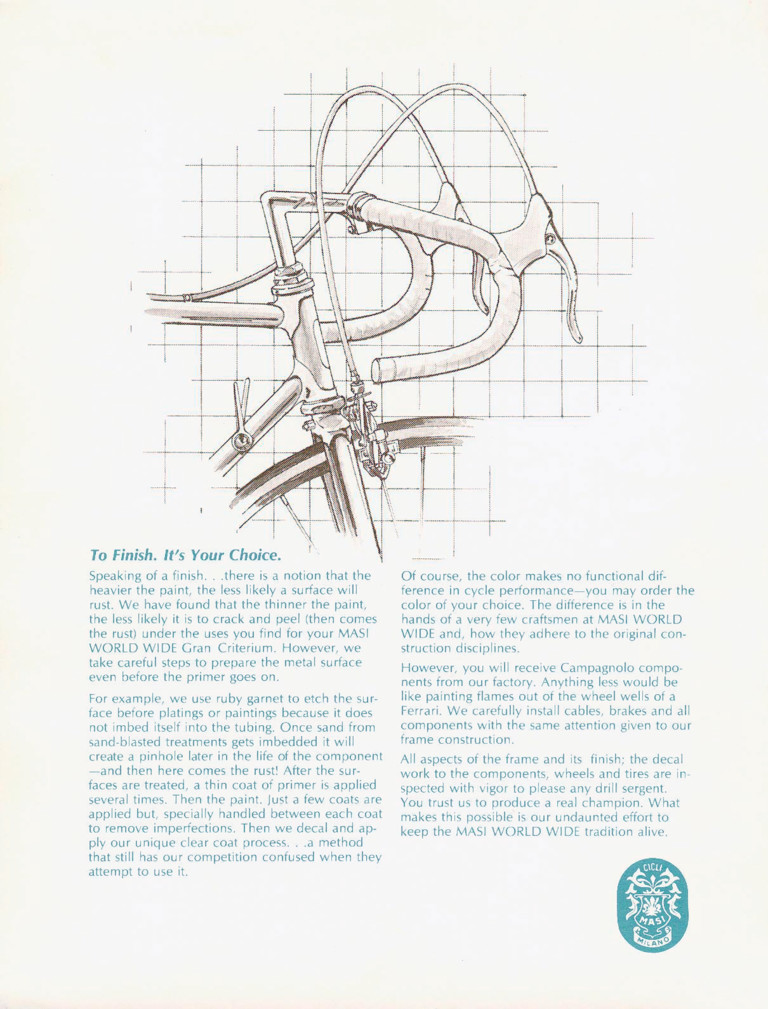
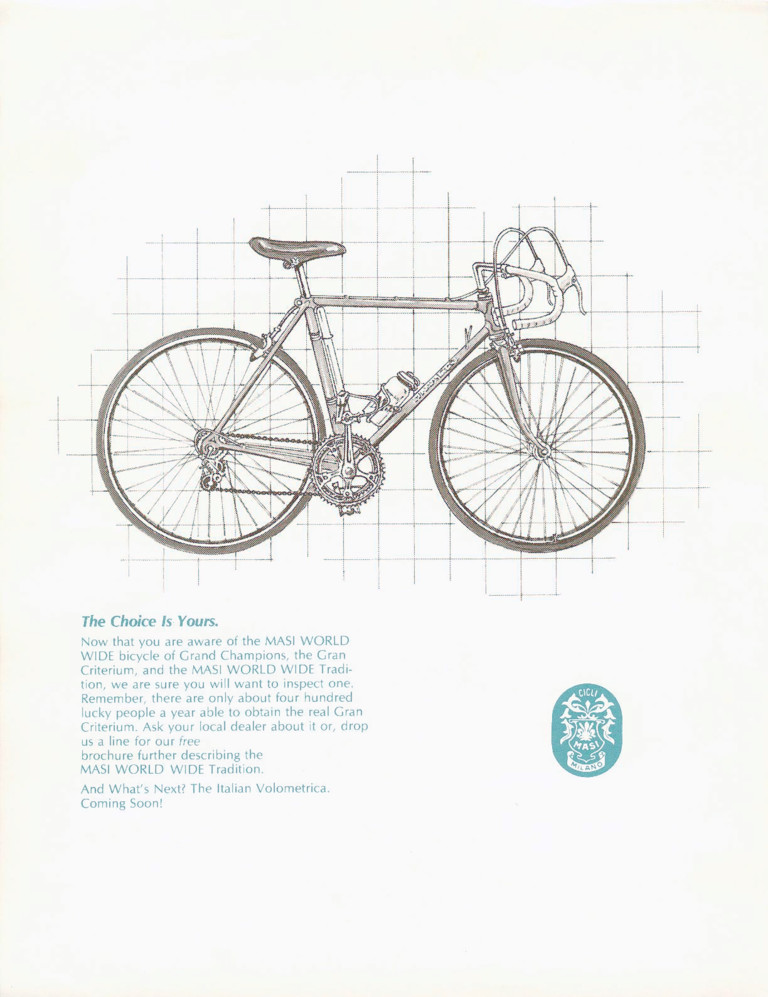
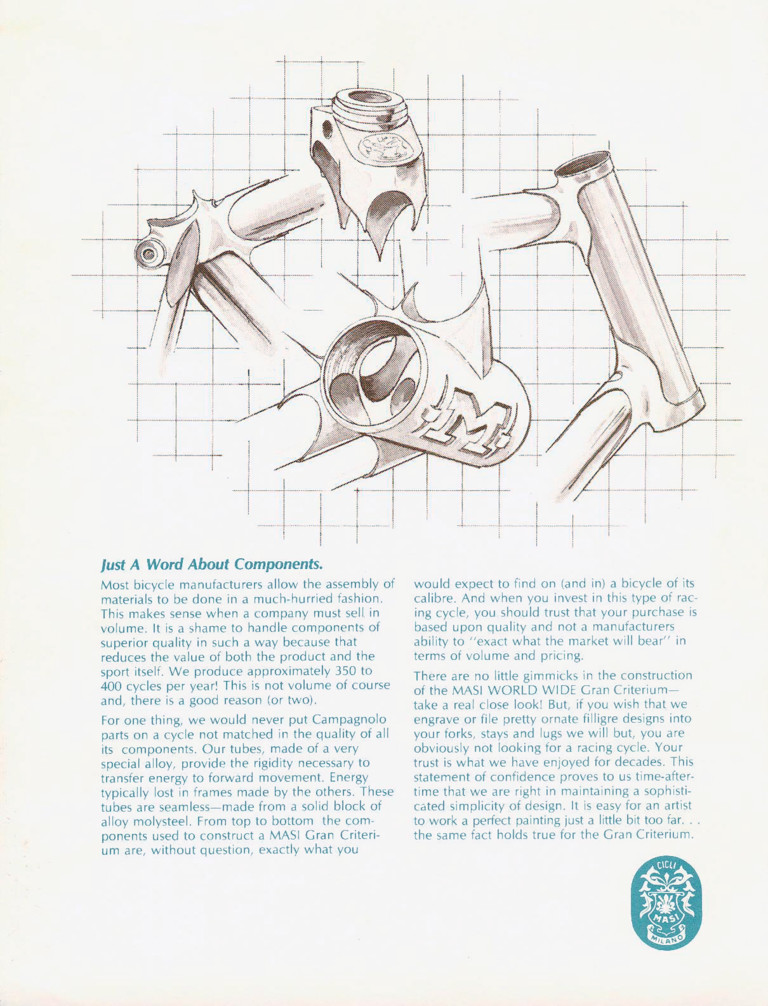
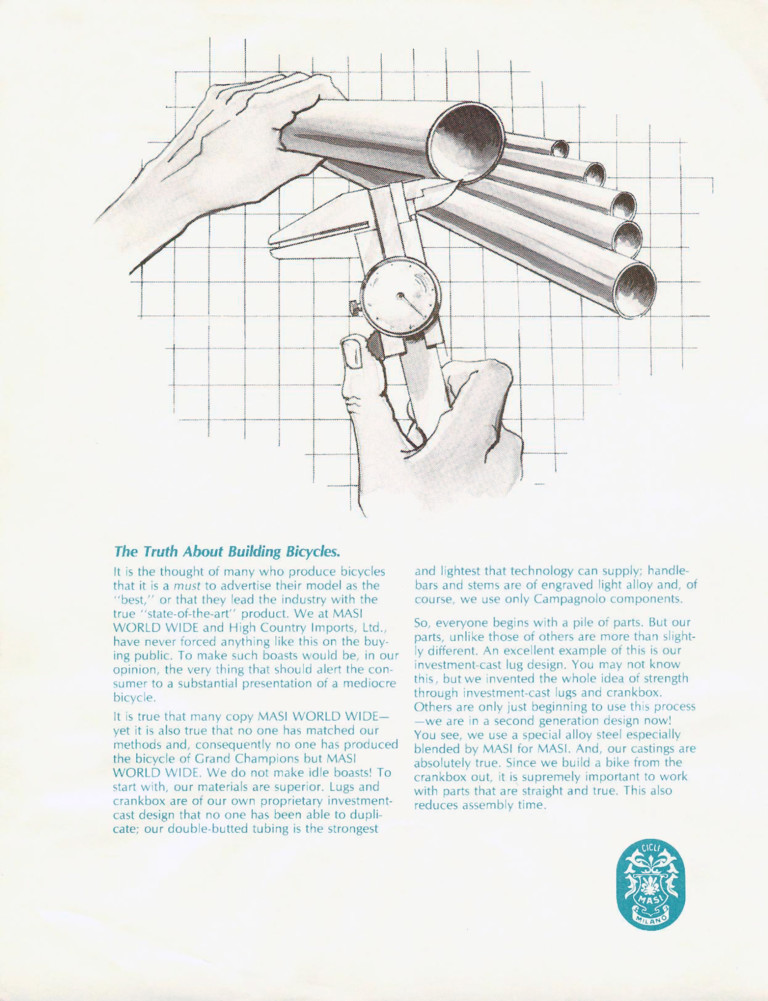
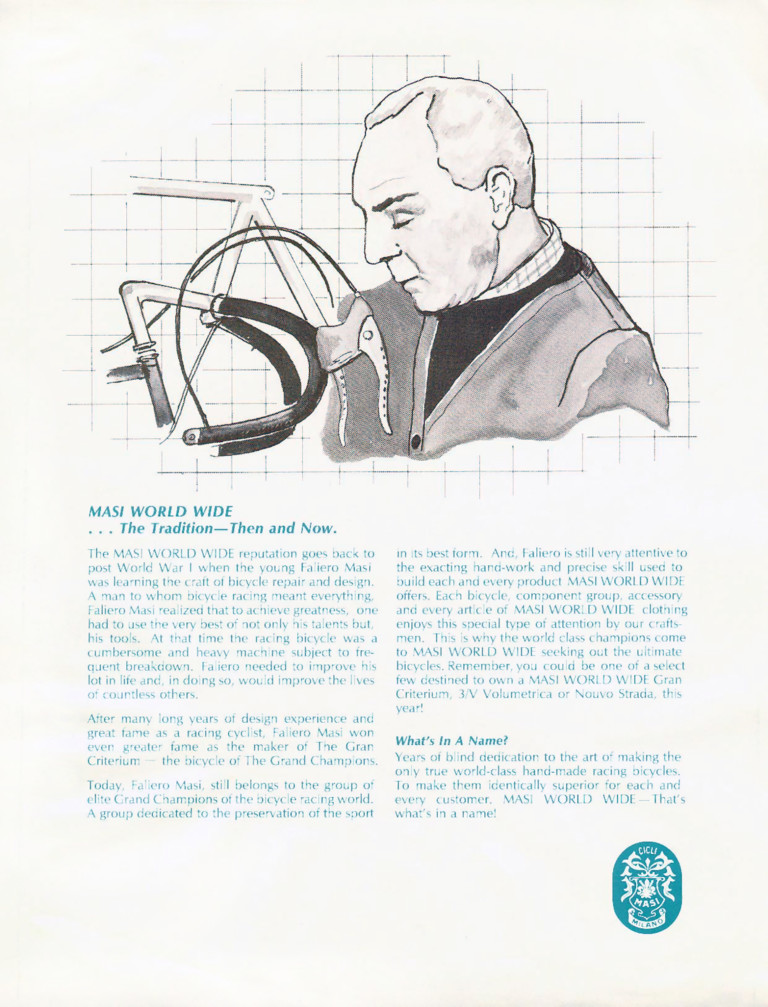
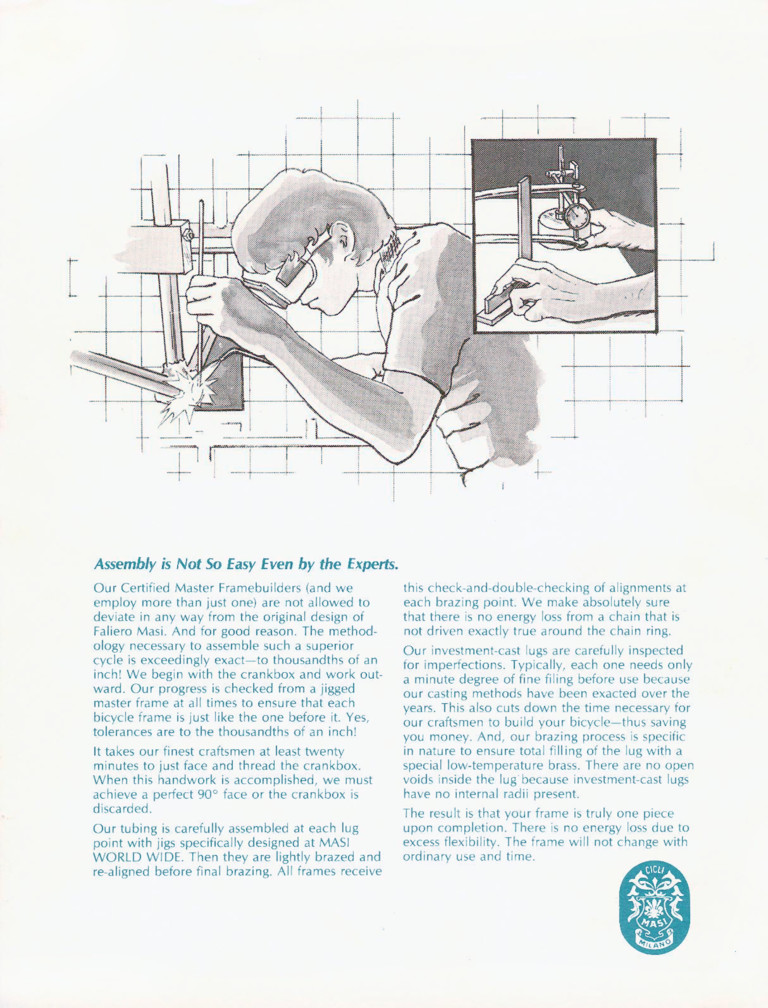
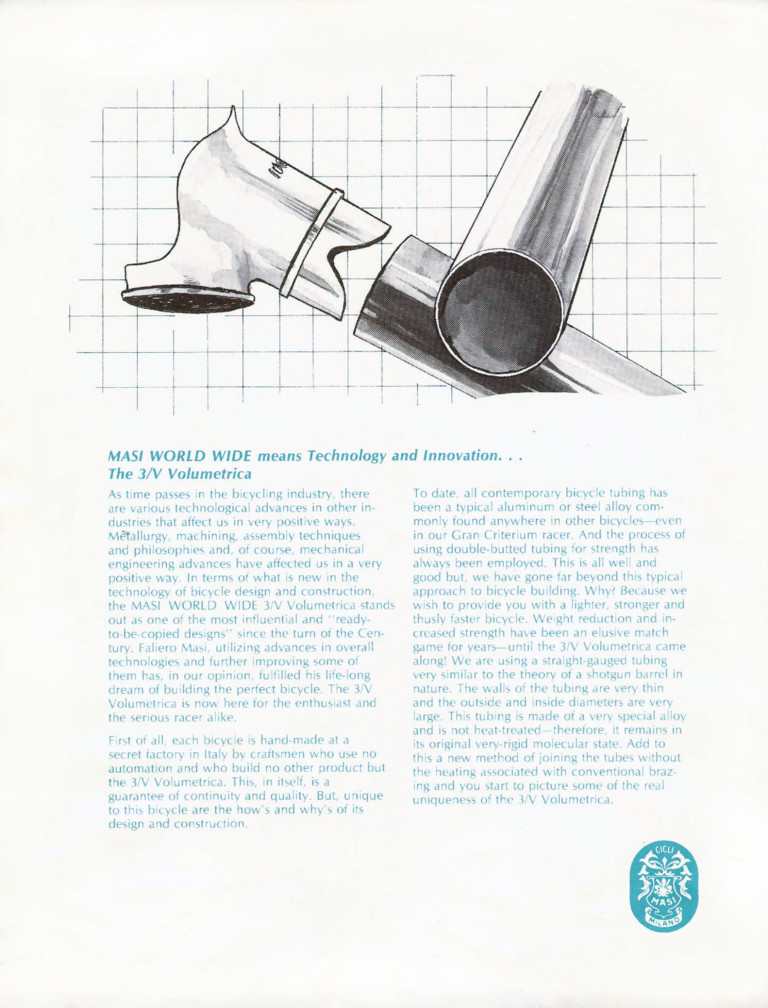
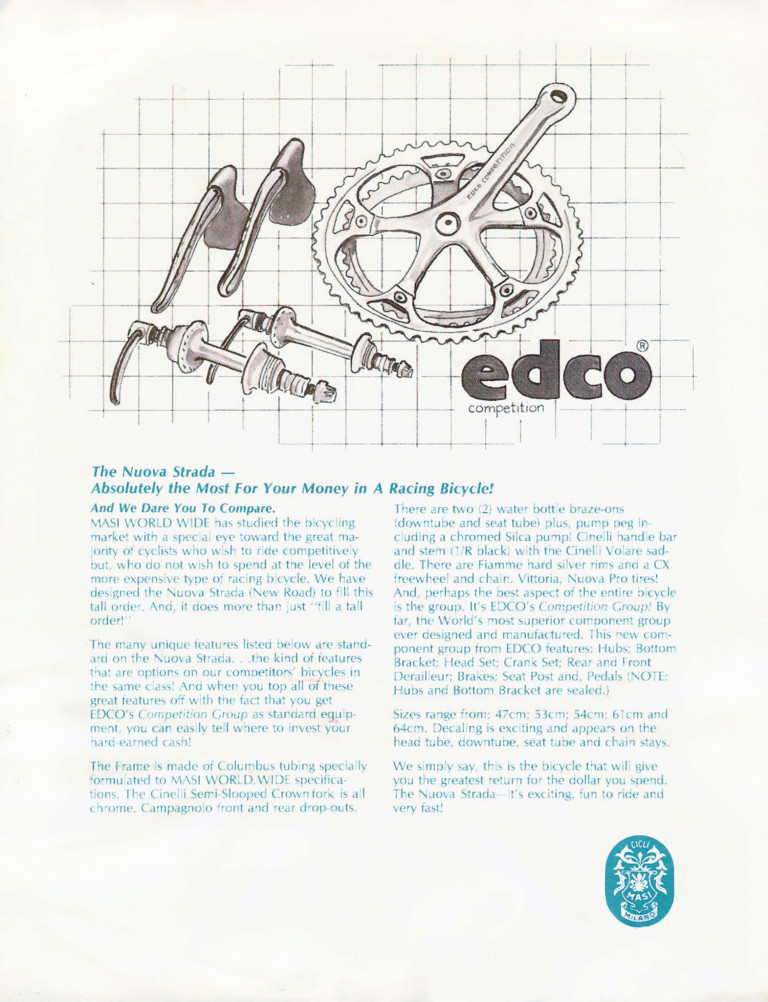
Alberto’s philosophy of producing fewer than 800 handmade frames per year contrasted sharply with the mass production ambitions his American backers had in mind. This led to a well publicized and heated breakup between Italian and American counterparts, and the vaunted Masi family soon found themselves unable to continue selling bikes by their own name in the United States.
Prior to Faliero’s retirement and rift with the company in the late 1970s, Alberto introduced the Prestige model in 1975 as a modernized version of the Gran Criterium. With a more modern and sterile design featuring micro-fusion investment cast lugs, it was only imported to the United States in small numbers by special order thru Masi Worldwide/High Country imports. The good folks at Cicli Corsa Classico show a particularly beautiful example of the Prestige model from 1975 here, much like Cicli Berlinetta shows a beautiful example from 1978 as below.
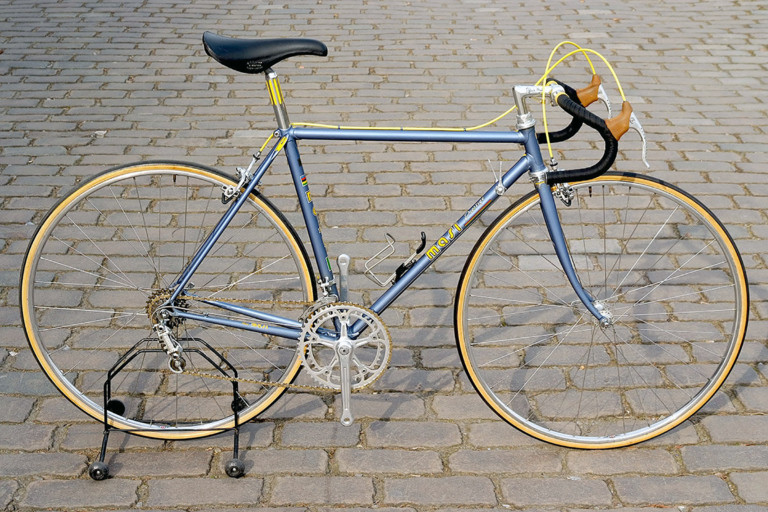
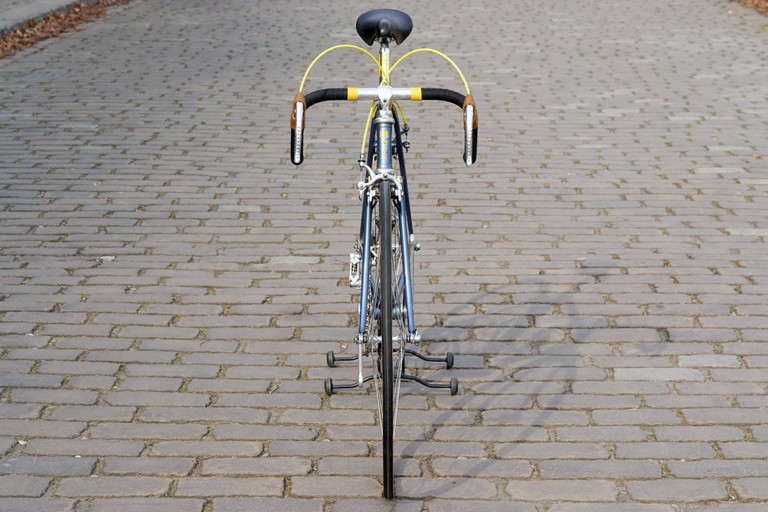
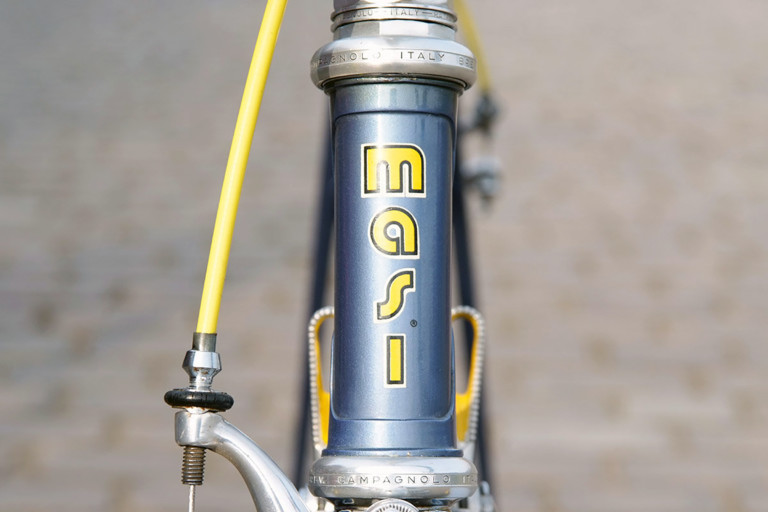
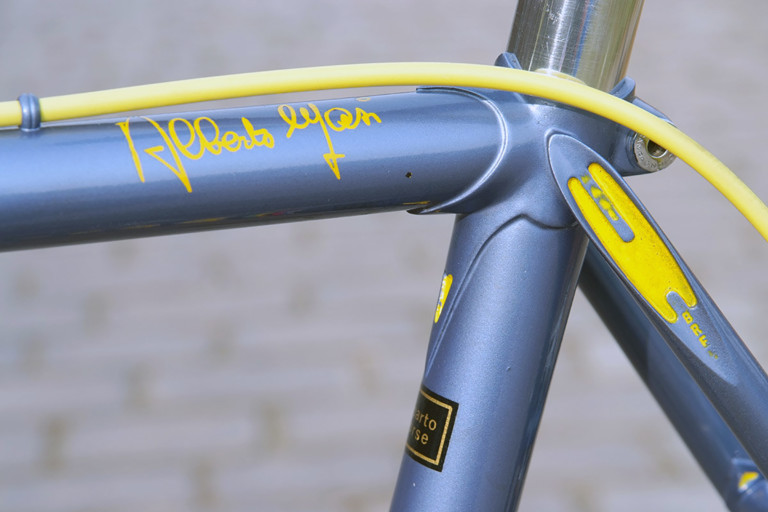
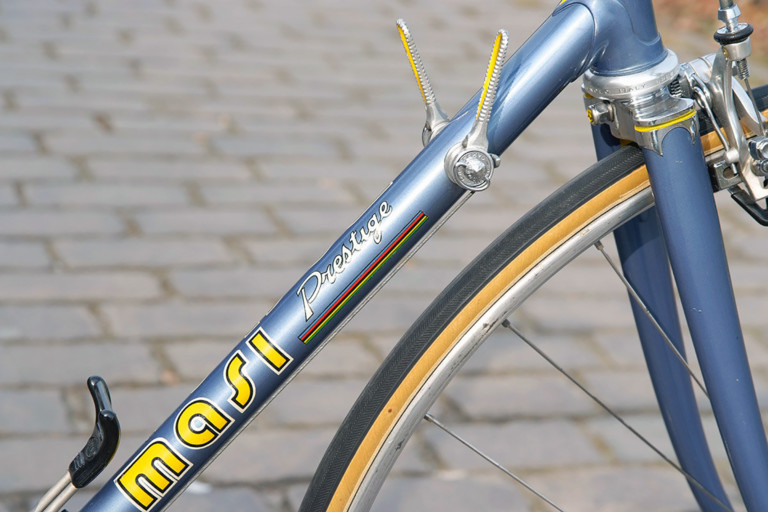
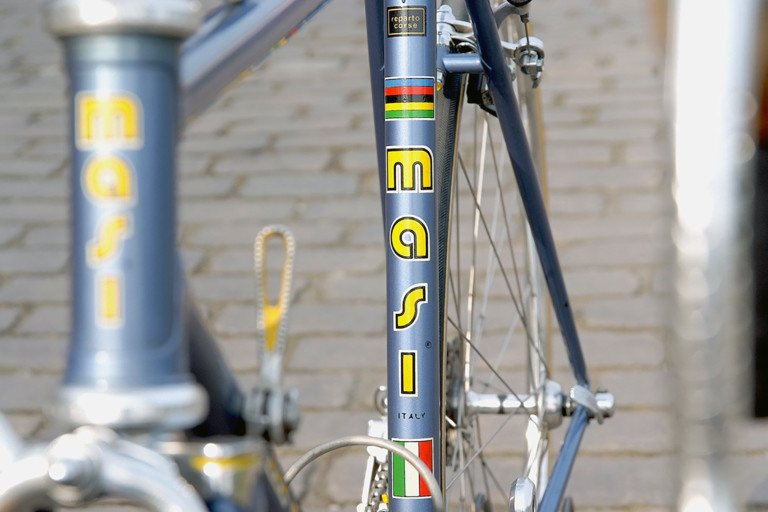
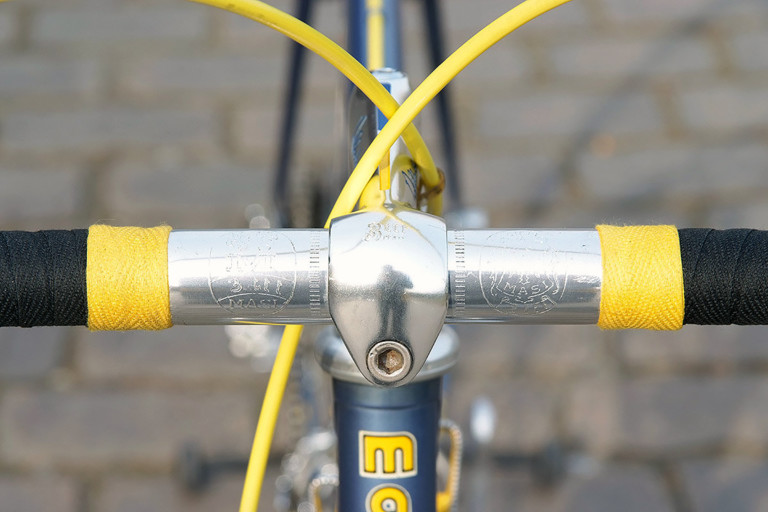
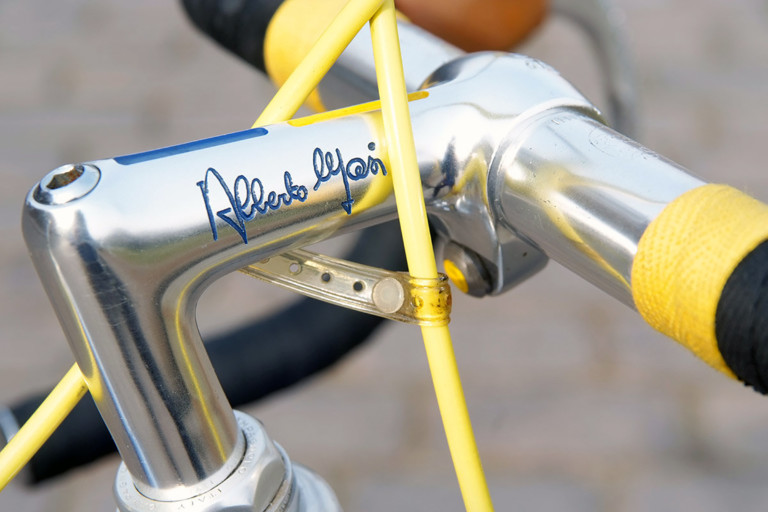
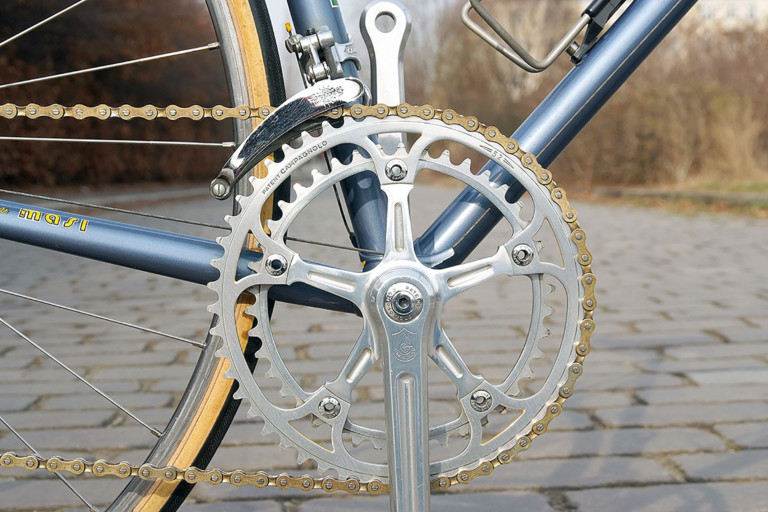
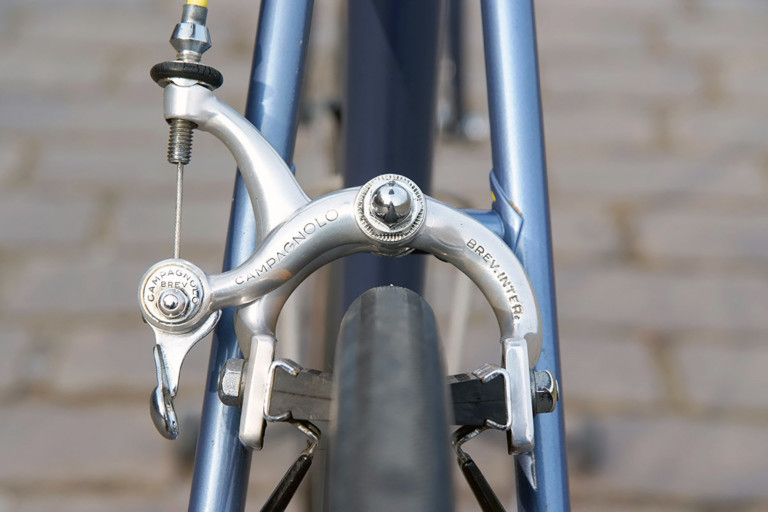
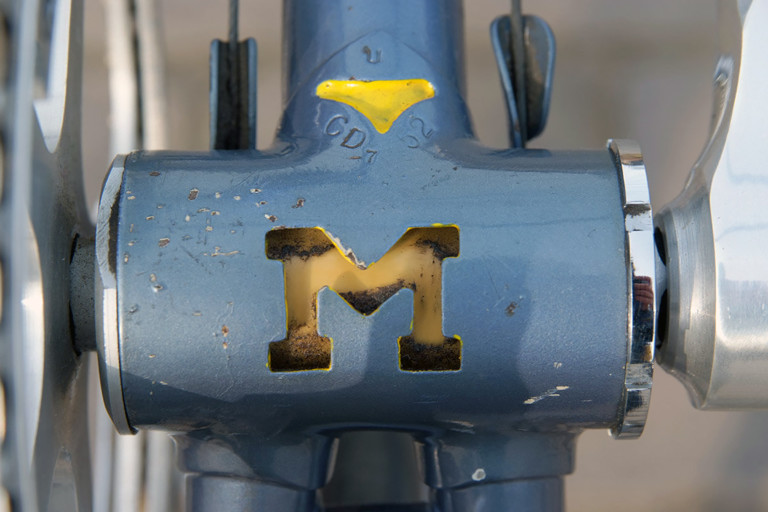
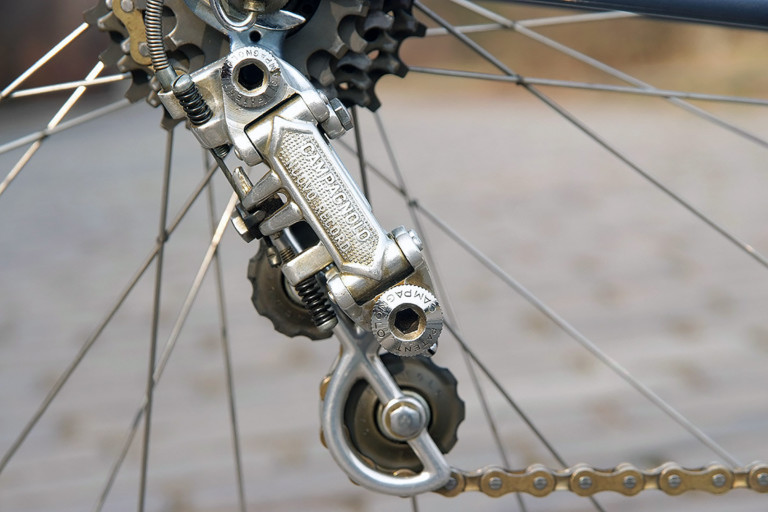
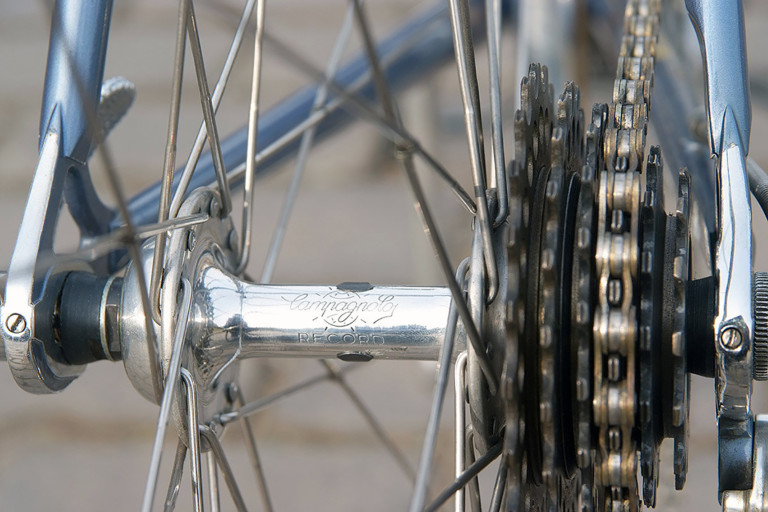
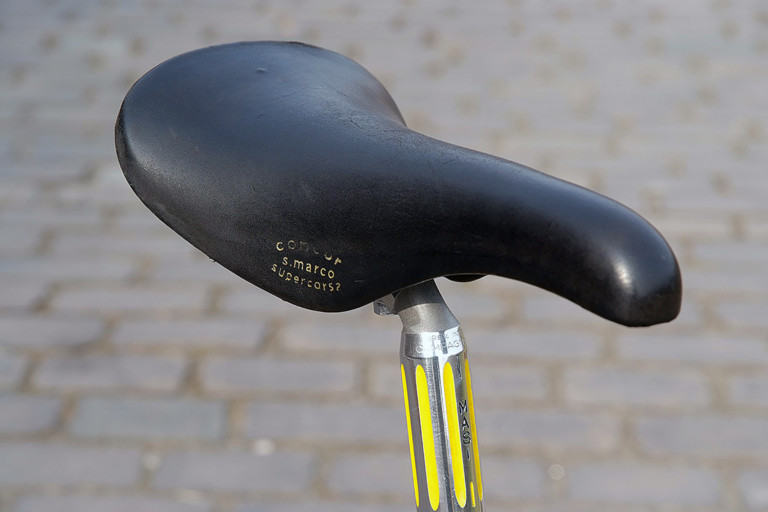
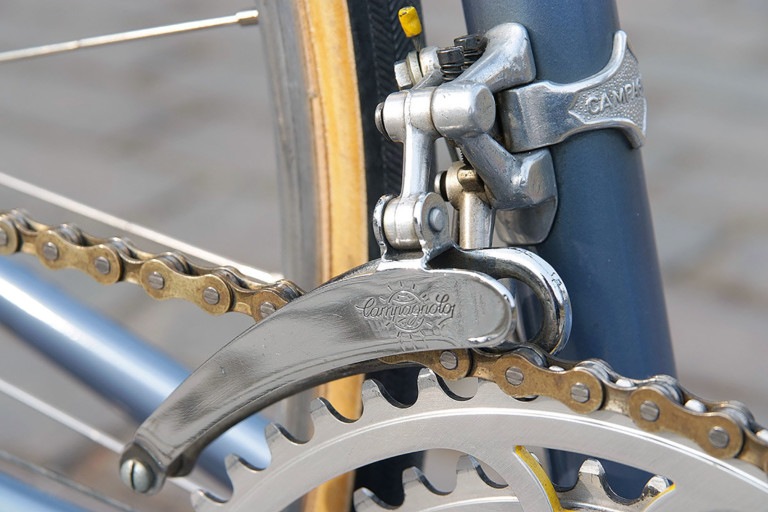
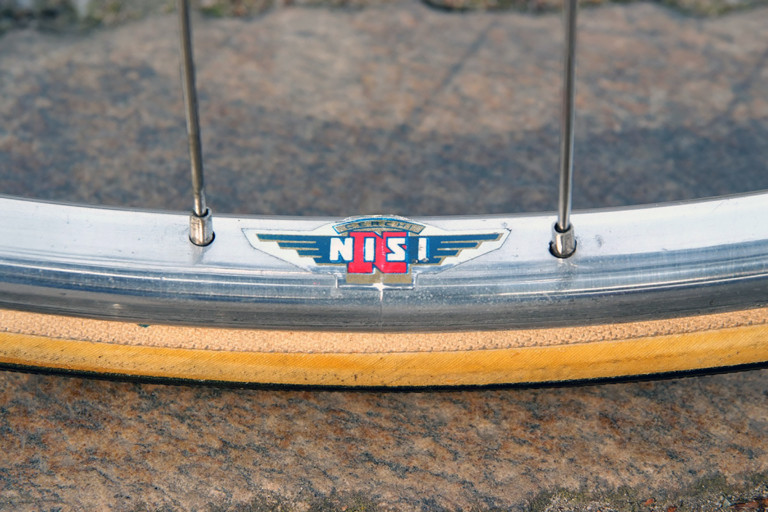
Because California Masi owned the distribution rights to the Masi name, Alberto was unable to put his Prestige model in the hands of wanting American buyers. For that reason, Prestige framesets remain very desirable today in the U.S. market.
By 1980 many thought the “golden era” was over for Masi. In what was perhaps the most significant contribution to era framebuilding, however, Alberto introduced the 3V Volumetrica in 1981. The Volumetrica was the first frame to feature internal lugs and oversize tubing on a steel frame.
It was such a transcendent design that Masi started producing custom frames for more modern champions like Claudio Chiappucci, Miguel Indurain and Greg LeMond. The Volumetrica was and still is one of the most nimble and stiff bikes ever made.
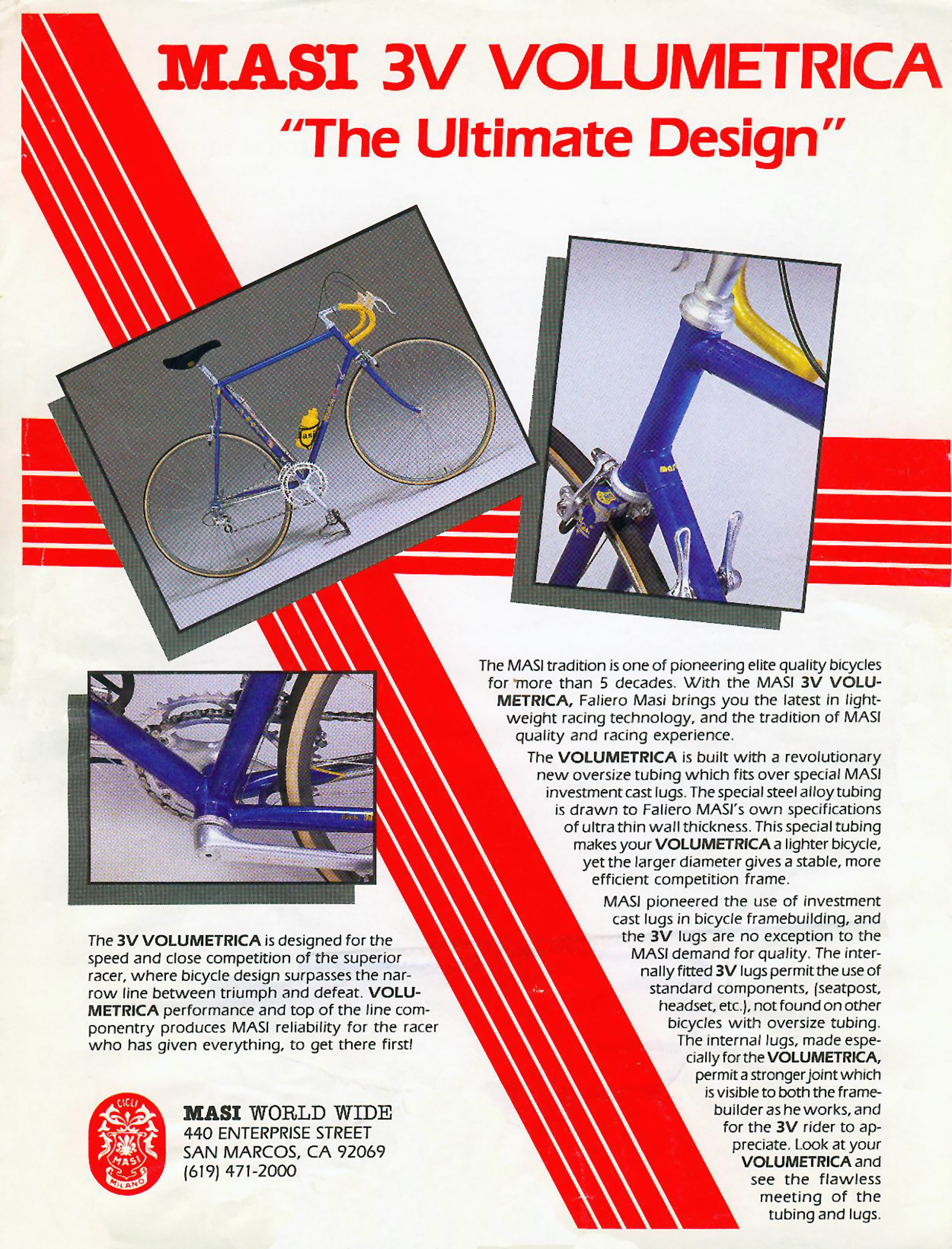
Much like the fabled Mercedes 300SL Gullwing, the Masi 3V Volumetrica was 20 years ahead of its time in design and execution. Although revolutionary, the Volumetrica was a distant cousin from the forgiving Cadillac-like ride delivered by the Special and Gran Criterium models. The Volumetrica was a no nonsense, stiff-as-triple-starched-dress-shirt ride that delivered razor sharp performance.
If teeth chattering in the back of one’s head on poorly paved roads was a tolerable thing, the Volumetrica was your fastest choice. Classic Rendezvous has a great Bicycle Guide road test of the Volumetrica from the late 1980s. The 3V Volumetrica model was so successful it was still offered by Alberto and company a full 25 years after its introduction.
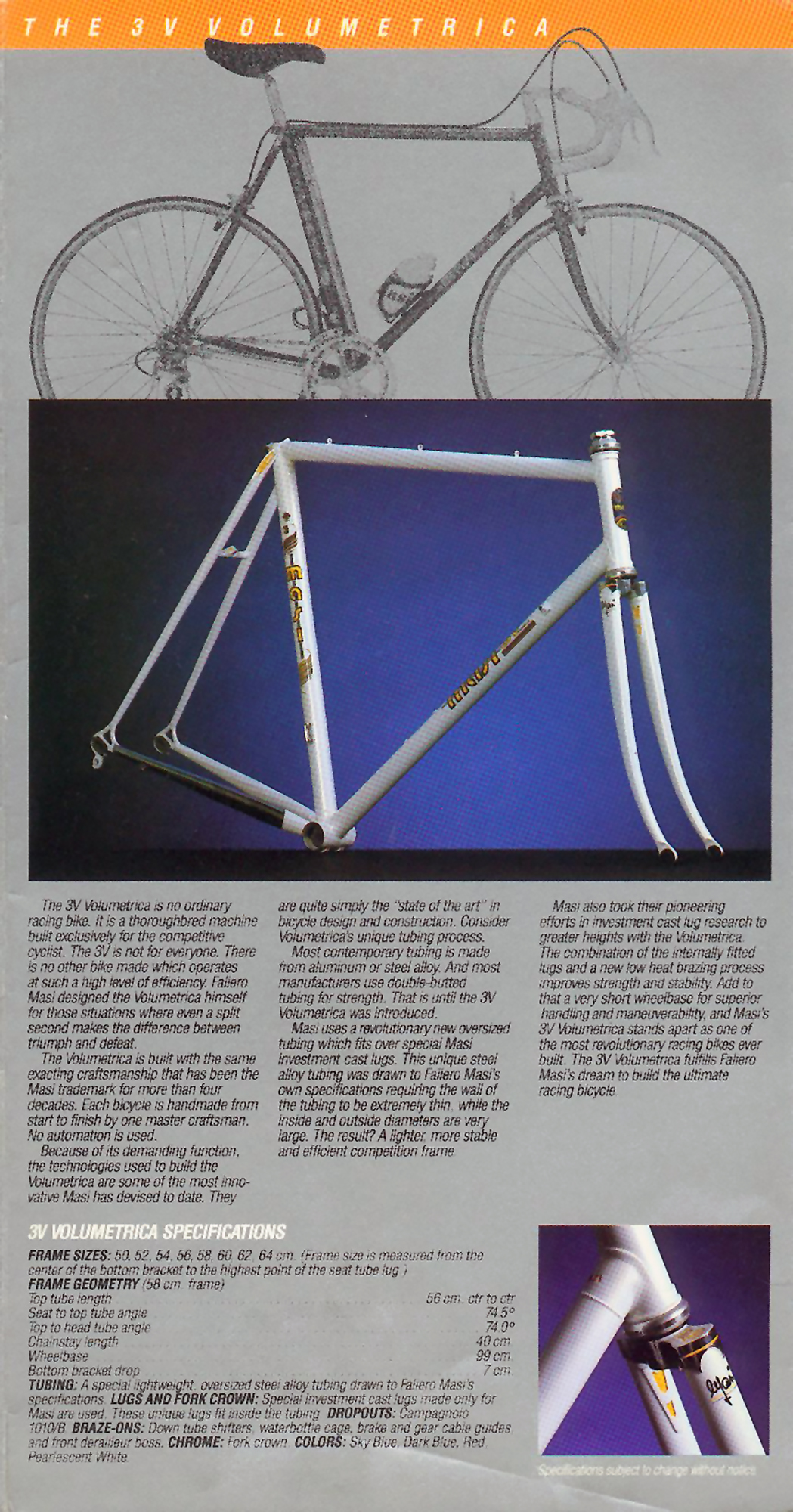
Masi 3V Volumentricas were imported into the U.S. market thru Masi Worldwide from 1984 to 1987 as bonafide Masi 3Vs in name. From 1988 onward, Joe Starck built 3Vs in the United States bearing the Milano 3V name badge to commemorate the city in which Cicli Masi had originated.
Leading Masiphile, Bob Hovey, adds:
“American 3Vs are distinguished from Italian 3V’s by different decals and the use of a different fork crown and dropouts. Another (cheaper) variant, the Team 3V, was later built for Masi USA under subcontract by Mondonico. Small numbers of US 3Vs continued to be built by Ted Kirkbride in the ’90s, and Ted says they are still available today.”
The Volumetrica started as a steel machine, but as frame material options grew, Masi offered the Milano 3V in steel, aluminum and even carbon. Still offered in steel, aluminum and carbon today, other Masi frames sold now are no longer made by hand at the Cicli Masi shop beneath the Vigorelli velodrome.
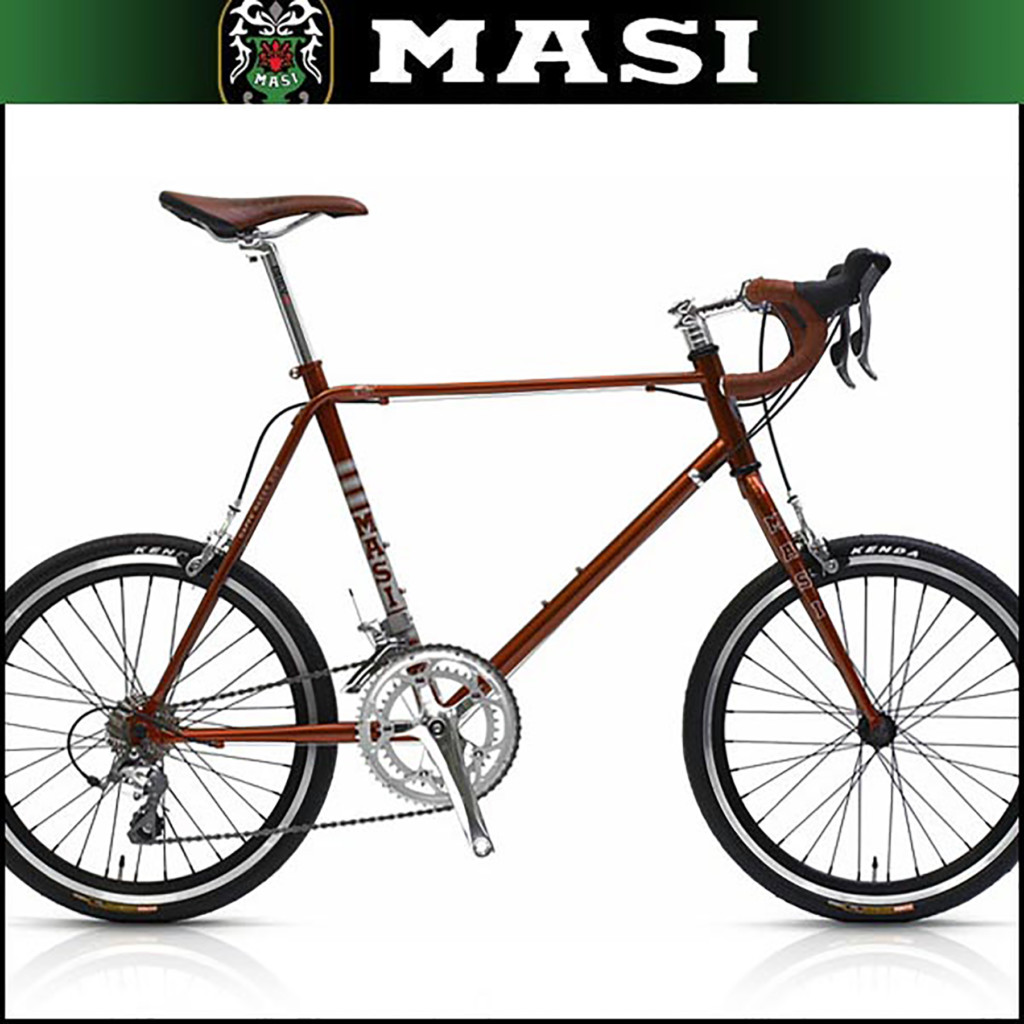
With headquarters remaining outside of San Diego, Masi Bicycles has grown into a mature company taking full advantage of mass-produced assembly line manufacturing practices. The pressures of competition and a global economy have forced Masi Bicycles into becoming a company far different from the days of Faliero.
Masi bikes are still the ultimate in high technology and advanced design — but the mystique of a modern Masi remains a far cry from that conjured by The Tailor and his apprentices. That observed, it seems the good people at Masi Bicycles remain aware of their brand’s history and timeless appeal: the Gran Criterium model introduced way back in 1973 remains available and popular today. The Tailor would be proud.
Greg Fletcher
Greg Fletcher’s Masi Lore
Masi Prestige on Cicli Berlinetta
[…] chief quaternity of classic lightweight Italian bicycle builders: Cino Cinelli, Ernesto Colnago, Alberto Masi and Ugo De […]
[…] named second mechanic on the Nivea team under the legendary Faliero Masi, founder and namesake of Masi Bicycles. Colnago went on to become head mechanic for the Molteni team of cycling superstar Eddy […]
gran crits were built as early as 1969 as can be seen on
Bob Hovey’s register. I ride a “68 special and have never
found another bike that compares,it just has a certain
“feel”
[…] chief quaternity of classic lightweight Italian bicycle builders: Cino Cinelli, Ernesto Colnago, Alberto Masi and Ugo De […]
Love masis’ and Breaking Away is the best movie ever. I own a Lippy built Masi and love it. Same color as the breaking away bike. Bob Hovey is my hero and a real Masi expert. Was wondering about the decals on the breaking away masi arent like the ones i always see on gran crits….Were these just for the movie? I think the dt decals just say Masi and are very plain. Masi Forever
Thanks for the kind words, Joe. Sorry it took six years to reply ;-). The plain “solo” decals (just the Masi name) were first used on track bikes (for which the name “Gran Criterium” would have been inappropriate). Some liked the cleaner look (plus it was easier to apply) so the solo decal did come to be used on to some later road frames (including the Breaking Away bikes).
By the way, one more correction to the article … I don’t believe the “Milano” badge was ever used on a Joe Starck build. “Milano” was a brand that Alberto used on bikes that were intended to be sold in the US without violating the contractual agreement his father had made regarding the use of the Masi name in the US.
I bought a Masi Prestige from Alberto in 1982. You can see it here, as well as a pic of Alberto and myself and Ted Kirkbride at the Long Beach show in 1984 http://www.flickr.com/photos/8379107@N03/sets/72157623082578895/ Alberto is a great guy and I enjoyed meeting him. At the time, we were a Masi dealer for High Country Imports/Masi USA and I had to deal with Randy Buckley, whom I can only describe as the part of the horse that goes through the gate last. I met him too in Long Beach, and when he took me away from Alberto to have a word with me about how he needed me to buy more of his Gran Corsas (yuck!) Alberto said to him something like “Siete piacevole lui. È il mio amico.” (You be nice to him, he is my friend.) Mike Neel was working for them at the time and translated for Alberto. We had ordered a batch of frames and bikes from Alberto before Randy Buckley got involved, and when he found out he called me up to read me the riot act. We eventually did get the bikes, and sold them all in 1984. With each one I gave away a bottle of Masi wine (no relation) with a hand lettered label. I sold my Prestige in the mid 90s but wish I hadn’t. Now I have 1972 Italian and 1974 Carlsbad Gran Criteriums. I have also acquired another Prestige frame that I am restoring and will equip with some NOS Super Record parts. They are all great bikes. I have to say the idea of a Chinese made Masi is quite revolting. Thanks for a great site.
i need touch up paint for my oarnge fixie
This reply is to Diane Moser. I worked with your dad when he live in Avon/Vail Colorodo. He hired me to sell Masi bicycles and parts for High Country Imports. The owner? was Randy Buckly. Rene came to Albuquerque and I helped develop a sales and marketing strategy for both Masi and High Country. Ted Kirkbride was building the bikes in Carlsbad. Rene was a truly genuine person and had a vision for Masi that unfortunately failed due to economic issues of funding etc.
Hello everybody!
Finally i found your nice MASI blog for enthusiasts…
I got a MASI Prestige from January 1980 with complete Campagnolo Super Record from 1979
Brown Colour with Yellow Decals and painted Yello Campagnolo Parts…
Sadly the Frame messure is 53 cm (Seat Tube) and it’s too small for me…
Nearly perfect conditions…a few scratches on the top tube and without pedals…
Even the Saddle (Turbo, Bernard Hinault) and the golden Bar Tape is original…
Anybody interested to buy my bike?
For Pictures contact me…
flavio.piazza@gmx.ch
Hello,
I am looking at a Masi Gran Corsa, 1987. Can you tell me where it was built, who was the builder and what the value might be? It was originally purchased in the Bay Area of California as a frame set. The components are from an early 80’s Bianchi with a mix of Campy NR and Chorus:
Handle bar says Bianchi
Stem says custom
Seat stem 3TTT
Headset is Campy
Front derailleur is Campy
Rear derailleur is Campy Nouvo Record
Chorus brakes
Wheels hubs are Gipiemme
Thank you.
Found this 1971(best guess) Masi Gran Criterium built in Verona Italy (V53) a week ago and have been riding it since. What a wonderful bicycle and I cannot wait to fully restore the bike, assuming that I choose to keep it(size is an issue and the bike might be a tad small).
Diane,I met your dad at one of the Bike shows , maybe Long beach in 1986 and he was such a nice man.He had a real passion for Masi!
Hi! I was surfing and found your blog post… nice! I love your blog. 🙂 Cheers! Sandra. R.
My father worked for Masi in Rancho Santa Fe, CA in the 70’s. He assembled the bikes before they went to the dealers. I was a young child at the time but distinctly remember the beautiful bicycles. My father passed away a few years ago, so now I am unable to talk to him about Masi. His name was Rene’ Moser. He was from Switzerland and had a true appreciation for the art of the Masi bicycles. I find the history fascinating, thank you!
I have a white 3V ,no. M58,9095 ,trying to establish year and location of manufact ure. Any help would be appreciated,thanks,Ken
More Masi lore..
Eddie Weissler, a frame builder and owner of Cyclery North in Chicago in the 70’s & 80’s, claims to have built the Masi that was featured in the TV Series “Breaking Away” with Shawn Cassidy playing the role of Dave.
Eddie stated that Masi would not allow their actual frames to be shown on television, due to the proprietary nature of their frame angles.
I still have the bike I used to race on. It’s a yellow Masi Gran Criterium which I purchased in the fall of 1974 from a bike shop in Salt Lake City called Pro cyclery. The serial number 432 MC 62. If anyone has any info you could share, I’d like to hear from you. Jon Metcalf – jonrmetcalf@hotmail.com Thank you,…
I really enjoyed reading your Masi page. If you don’t mind, I have a few additions and corrections that you or whoever wrote the article might find helpful.
1: Faliero Masi spent a few years working at Gloria just before WWII.
2: “Masi brought his enterprise to the United States to take advantage of the blossoming interest in American cycling. Faliero’s son, Alberto, and his frame building master apprentice, the legendary Mario Confente, also came along to help grow the business.”
Alberto remained in Italy. Faliero, Mario (who was technically not an apprentice, he was a Masi subcontractor who had his own shop and several employees of his own in Verona), and Roberto were the ones who came to the US.
3: “Alberto Masi also built Gran Criterium frames in Milan during the late 1970s”
Technically true, but for all practical purposes the Italian Gran Criterium was pretty much gone by the mid ’70’s, replaced by the Prestige.
4: “Greg Fletcher’s Masi Site hosts a wealth of information on identifying and dating California Masis as provided by Brian Baylis, (snipped)”
Greg’s got a wonderful site but the material on dating US Masis is a bit fragmented. For a more complete overview of California Masi serial numbers, please take a look at my article (and feel free to link to it if you like).
This article is continually updated and supplemented while the Masi Lore information is composed mostly of quotes from the Classic Rendezvous mailing list (and as such has a few holes here and there).
4: “The greatest number of Gran Criteriums were built at the Carlsbad facility in the 70’s, with Breaking Away helping propel the model to become Masi’s most popular ever.”
This quote is a bit misleading because the Carlsbad facility had been closed for several years when Breaking Away came out. David Stoller’s (misspelled “Stohler” in your article) Masi may have been built by Rob Roberson at Rancho Santa Fe. Other possible builders would be Keith Lippy or Ted Kirkbride.
5: “While Masi was being introduced to the growing U.S. cycling masses, Faliero returned to Italy upon becoming disenchanted with the American lifestyle. He ran most business operations from Italy while production continued in California. Before long Faliero stopped visiting the U.S. facility and retired from the business, shuttering his shop in Milan. Faced with the prospect of ending his family legacy, Alberto decided to reinvigorate the Masi brand and reopened its legendary space beneath the Vigorelli.”
I have not seen any evidence that Faliero had very much to do with California business operations after returning to Italy.
Alberto took over the Vigorelli operation and was producing bikes in Italy, probably from the moment Faliero stepped on the plane to the US. Also, I would be very interested to know the source of the statement that Masi ever closed its doors. One article states that they “considered” closing the shop, but there’s no indication that it ever happened… I have a collection of photos of several hundred Italian Masi frames with nearly continuous date codes from the early 70’s thru the late 80’s.
6: “in the late 1970s, Alberto introduced the Prestige model as a modernized version of the Gran Criterium. While featuring a more elegant and refined design with micro-fusion cast lugs, it was never legally imported to the United States.”
The Prestige was introduced in early 1975. Investment cast lugs appeared on American Masis at nearly the same time as their appearance on Alberto’s bikes. Note that most collectors would take exception to the comment that the cookie-cutter IC lugs were more “elegant and refined” than the older hand-filed pressed lugs. “Lifeless and sterile” might be a more common description of the newer lugs.
Prestiges were imported legally in small numbers by special order thru Masi Worldwide/High Country imports. I have photocopies of several order forms and price quotes signed by Alberto.
7: “Nearly 25 years after its introduction, the 3V Volumetrica is still offered by Alberto, although in the United States it is released bearing the Milano3V name badge”
You might want to add that early on Alberto’s 3V was indeed imported into the US thru Masi Worldwide in 1984-1987 (as bonafide 3V’s, not under the Milano name). Then, from 1988 on, Joe Starck built American 3V’s in San Marcos. These are distinguished from Italian 3V’s by different decals and the use of a different fork crown and dropouts. Another (cheaper) variant, the Team 3V, was later built for Masi USA under subcontract by Mondonico. Small numbers of US 3V’s continued to be built by Ted Kirkbride in the ’90’s, and Ted says they are still available today.
8: “Masi frames now sold in the United States are no longer from the hands of the Cicli Masi shop beneath the Vigorelli velodrome.”
Unfortunately, neither are Italian Masis. Alberto’s “retro” steel bike (the Nuovo Prstige) is built by a subcontractor, and the rest of the Masi line is almost certainly subcontracted as well. Anyone who visits the Vigorellli today will probably see a few bikes being assembled or repaired, that’s about it.
—
I would like you and your readers to be aware that there is a Registry for US and Italian Masis… if anyone wishes to have their Special, GC, Prestige, 3V or Pista listed, they are welcome to contact me and I’ll be happy to add it (note that the Registries are limited to lugged steel Masis only).
Italian Masi Registry
American Masi Registry
Best wishes,
Bob Hovey